KDLitker E6 P60 Host Flashlight Review
The KDLitker E6 P60 host flashlight body is a great inexpensive entry into the world of p60 flashlights. Read on for thoughts and testing!
Official Specs and Features
Here’s a link to the KDLitker E6 flashlight host product page.
Versions
Really there’s just one version of this E6, but there are a few items that share the name E6. This is the only 18650 E6 (that I’m aware of). This E6 is available as a kit too, which includes an extension tube. This extension allows 2×18650. Also available is the KDLitker E6 (21700).
Price
The KDLitker E6 host alone (no drop-in, no extension) is available for $12.99. The KDLitker P6 219b drop-in I’ve tested with here is available for $18.99. The extension adds $2 to the E6 price. (Get the extension, it’ll definitely be $2 worth of fun).
Short Review
After reviewing the E6 (21700), you’d expect this (probably more “original”) E6 to be fantastic. And it is. For $13, it’s a great bargain to enter the P60 host world. That said, between this E6 and the E6 (21700), I’d probably lean toward the 27100 version. I find the build quality is just a little better, and this leads to better usability.
Long Review
The Big Table
Most of this table pertains to the almost-random drop-in I’m using here, so bear that in mind. Your specifics will relate to whatever you drop in!
| KDLitker E6 | |
|---|---|
| Emitter: | Nichia 219b (P6-Quad Drop-In) (3500K 80CRI) |
| Price in USD at publication time: | $24.99 |
| Cell: | 1×18650 |
| Turbo Runtime Graph | High Runtime Graph |
| LVP? | Yes |
| Switch Type: | Mechanical |
| On-Board Charging? | No |
| Claimed Lumens (lm) | 1400 |
| Measured Lumens (at 30s) | 732 (52.3% of claim)^ |
| Candela per Lumen | 5 |
| Claimed Throw (m) | – |
| Candela (Calculated) in cd (at 30s) | 743lux @ 2.248m = 3755cd |
| Throw (Calculated) (m) | 122.6 |
| All my KDLitker reviews! | |
^ Measurement disclaimer: Testing flashlights is my hobby. I use hobbyist-level equipment for testing, including some I made myself. Try not to get buried in the details of manufacturer specifications versus measurements recorded here; A certain amount of difference (say, 10 or 15%) is perfectly reasonable.
What’s Included
- KDLitker E6 Flashlight Host
- Spare switch cover (green, glow in the dark)
- Spare o-ring
- Lanyard
- Tactical ring (soft rubber)
Package and Manual
There is no manual.
Build Quality and Disassembly
This E6 is basically the little brother to the E6 (21700). Of course, this 18650 version is the “more historical” P60 flashlight.
There’s a lot to like about the build quality of this E6. It’s a solid workhorse P60 host. My one complaint is that while very smooth, and not wrong in any way, the tailcap is very difficult to unscrew. It could come down to a difference in thin vs viscous lube used…
Here’s a top-down view.
Even though it’s a tight tailcap to remove, the threads are nice and smooth, and square-cut. They’re also very long threads, requiring a bunch of revolutions to cover.
The tailcap has an aluminum retaining ring, which allows access to the switch for maintenance or to switch out the switch cover.
The head end has some equally smooth threads, but they aren’t as hard to use. In fact, they’re easy enough to use that often when I was removing the tailcap, the head would start to loosen instead.
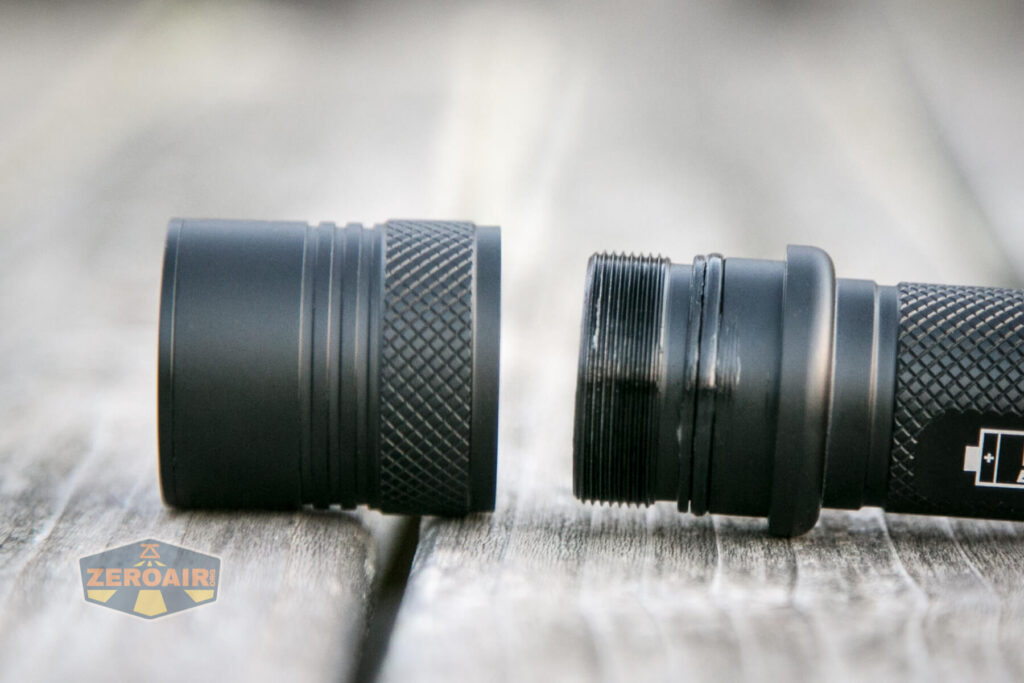
In case you had the interest to wonder, yes this head will also fit the E6 (21700) host. Those parts are interchangeable.
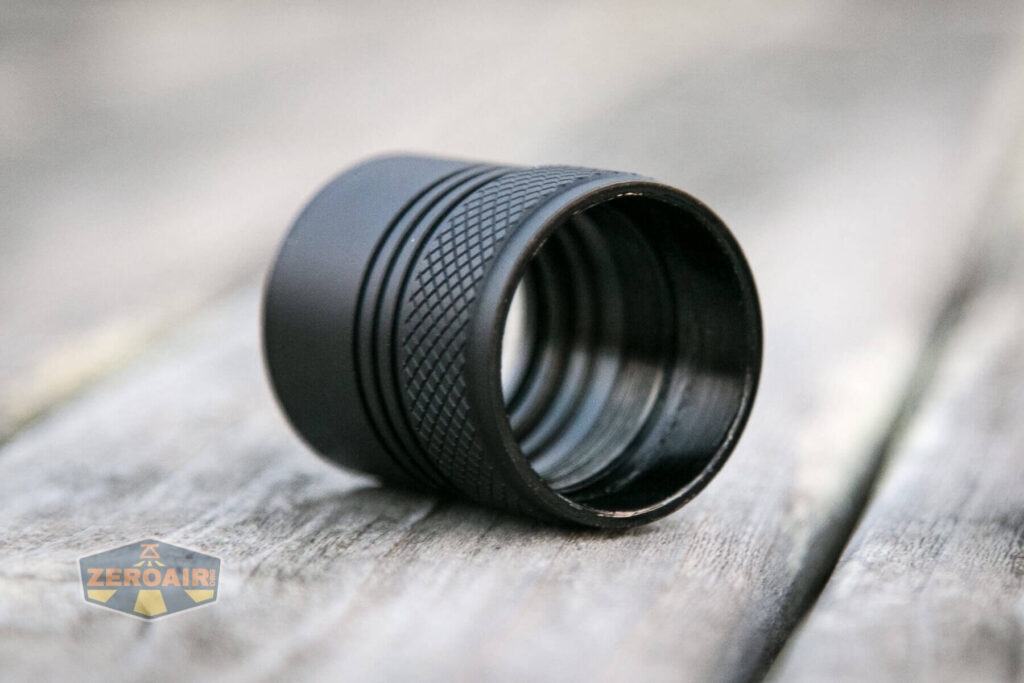
The flip side of that interchangeability is: this means the head on this P60 host is not the standard P60 threading. You will not be able to use alternate heads with this host. Head like the cooling fin head by Cryos, for example. If you never intend to change the head, then this should be no problem at all.
Like I’ve said before, this is just a host. But in the interest of having some data here, aside from just photos and thoughts, I’m including a few tests with this drop-in seen below. More on that later, but let’s start by establishing that any standard P60 drop-in does fit (the head threads mentioned above don’t affect this.)
The drop-in drops right in.
On the right side below note that exposed aluminum. You need good contact between these heavy-hitting drop-ins and the host, for good heat management.
The fact is, P60 hosts will probably never be the best at heat management, but they sure are fun.
Size and Comps
136mm / 5.35in (L) x 32mm / 1.26in (Dia. of Head) x 25.5mm / 1in (Dia. of Body)
If the flashlight will headstand, I’ll show it here (usually the third photo). If the flashlight will tailstand, I’ll show that here, too (usually the fourth photo).
Here’s the test light with the venerable Convoy S2+. Mine’s a custom “baked” edition Nichia 219b triple. A very nice 18650 light.
And here’s the light beside my custom engraved TorchLAB BOSS 35, an 18350 light. I reviewed the aluminum version of that light in both 35 and 70 formats.
Here’s the E6 (21700) with the E6.
And here’s both E6’s with a few other P60 hosts.
Retention and Carry
A lanyard is included. It attaches only on the tailcap, through one of these two holes.
I would rather have two holes on one side, like Convoy does their lights (like the S2+ you can see above.) The E6 setup works fine, but it does interfere with tailstanding. Either way, the switch cover is surprisingly proud on this light, so tailstanding isn’t really an option anyway.
Also included is this “tactical” ring. This ring is soft rubber (probably silicon), and stretches over the tailcap for installation.
It does have a specific cutout on the body though, so it works very well.
There’s no pocket clip or pouch or anything else for carry.
Power and Runtime
The cell tube of this KDLitker E6 is ideal for a single 18650, but what you actually use will depend on your drop-in.
This P6-Quad has a voltage range from 3V to 9V, so you could use a number of combinations. I tested exclusively with a single 18650 (the 30Q seen above.) It could be that 2×18350 (or even 3xCR123) provides more output. That would be a reasonable conclusion since this drop-in isn’t hitting anywhere near the 1400 lumen claim. One more note though: This is the 3500K emitter option, and there’s also a cooler option. Possibly (maybe even “probably”) the 1400 lumen claim is with the cooler Nichia 219b emitters.
You can see two types of cell protection here – first, the emitters will blink when the voltage gets under 2.9V. Then at around 2.8V, the light shuts off completely.
Whether we’re hitting 1400 lumens or not, this is a fun drop-in. At $18 or so, it wouldn’t be right out to buy this one and just gut it for different emitters and a different driver…
Modes and Currents
| Mode | Mode Claimed Output (lm) | Claimed Runtime | Measured Lumens | Tailcap Amps |
|---|---|---|---|---|
| Turbo (“5000mA”) | 1400 | – | 732 | 4.00 |
| High (100%) | 100% | – | 732 | 3.84 |
| Med (30%) | 30% | – | 367 | 1.29 |
| Lo (5%) | 5% | – | 109 | 0.32 |
| Moon (1%) | 1% | – | 33 | 0.10 |
Pulse Width Modulation
If this is PWM on the lower modes, it’s definitely not visible. It might not even be PWM.
For reference, here’s a baseline shot, with all the room lights off and almost nothing hitting the sensor. Also, here’s the light with the worst PWM I could find. I’m adding multiple timescales, so it’ll be easier to compare to the test light. Unfortunately, the PWM on this light is so bad that it doesn’t even work with my normal scale, which is 50 microseconds (50us). 10ms. 5ms. 2ms. 1ms. 0.5ms. 0.2ms. In a display faster than 0.2ms or so, the on/off cycle is more than one screen, so it’d just (very incorrectly) look like a flat line. I wrote more about this Ultrafire WF-602C flashlight and explained a little about PWM too.
User Interface and Operation
The mechanical switch that is included in the KDLitker E6 is a reverse clicky.
There’s a nice positive action in the switch, with quite a bit of resistance.
Since the switch is accessible, you could swap in a forward clicky if you wish. Also, the actual user interface for your light will be specific to the drop-in and driver it contains. This specific drop-in (which I do like, and recommend!) operates as follows:
| State | Action | Result |
|---|---|---|
| Off | Click | On (Mode Memory) |
| On | Click | Off |
| On | Tap | Mode advance (LMH direction) |
| On | Double Tap | Turbo, 5A |
| On | Triple Tap | Strobe |
This driver says there’s a Turbo at 5A, but I could not find it. It should be accessible via a double click, but I couldn’t tell the output was greater, and on bench power, I was never hitting 5A any time. That said, I could reliably hit strobe mode, so I know the tapping wasn’t an issue. It could also be that the “Turbo” means “100%” and it’s just a weird-wording way to say “Turbo” (or “100%”) is accessible from anywhere by a double-tap. This is logical, because if High is 100%, how could Turbo be higher?
There’s also a noticeable bit of flash when starting low mode. It’s not a huge bright flash, but it’s higher than the lowest mode, for sure.
LED and Beam
For me, the emitter in my KDLitker E6 is a Nichia 219b quad, in 3500K. This isn’t “the” 219b – it’s a good one though. The CCT of 3500K is quite warm (you can see below).
Everything here is easy to disassemble, actually. That brass bezel unscrews. The backside with the big spring unscrews.
Below are a couple of “uncalibrated” beam photos.
These beamshots are always with the following settings: f8, ISO100, 0.3s shutter, and manual 5000K exposure. I’ve included a fifth photo in the two below, in an effort to show the “5000mA” setting, even though I couldn’t get there in the UI. It seems to me to be the same as the 4th mode.
Tint vs BLF-348 (KillzoneFlashlights.com 219b version) (affiliate link)
I keep the test flashlight on the left, and the BLF-348 reference flashlight on the right.
I compare everything to the KillzoneFlashlights.com 219b BLF-348 because it’s inexpensive and has the best tint!
Conclusion
What I like
- Low-cost P60 host
- Even lower cost with a drop-in, which you’ll need anyway
- Great quality, especially considering the cost
- The tactical ring is quite neat – soft rubber (and not really tactical but…)
- Knurling is in all the right places
What I don’t like
- Tailcap is hard to remove
- This drop-in has preflash on low
- Nonstandard threads on the head
Notes
- This light was provided by me for review. I was not paid to write this review.
- This content originally appeared at zeroair.org. Please visit there for the best experience!
- For flashlight-related patches, stickers, and gear, head over to PhotonPhreaks.com!
- Please use my amazon.com referral link to help support zeroair.org!
- Please support me on Patreon! I deeply appreciate your support!


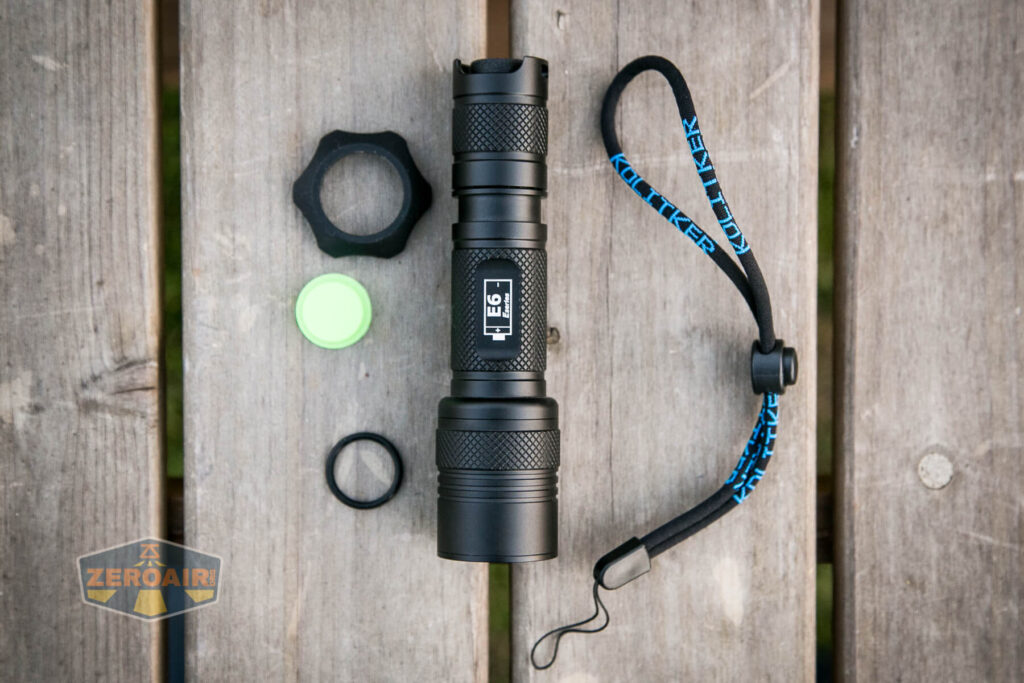
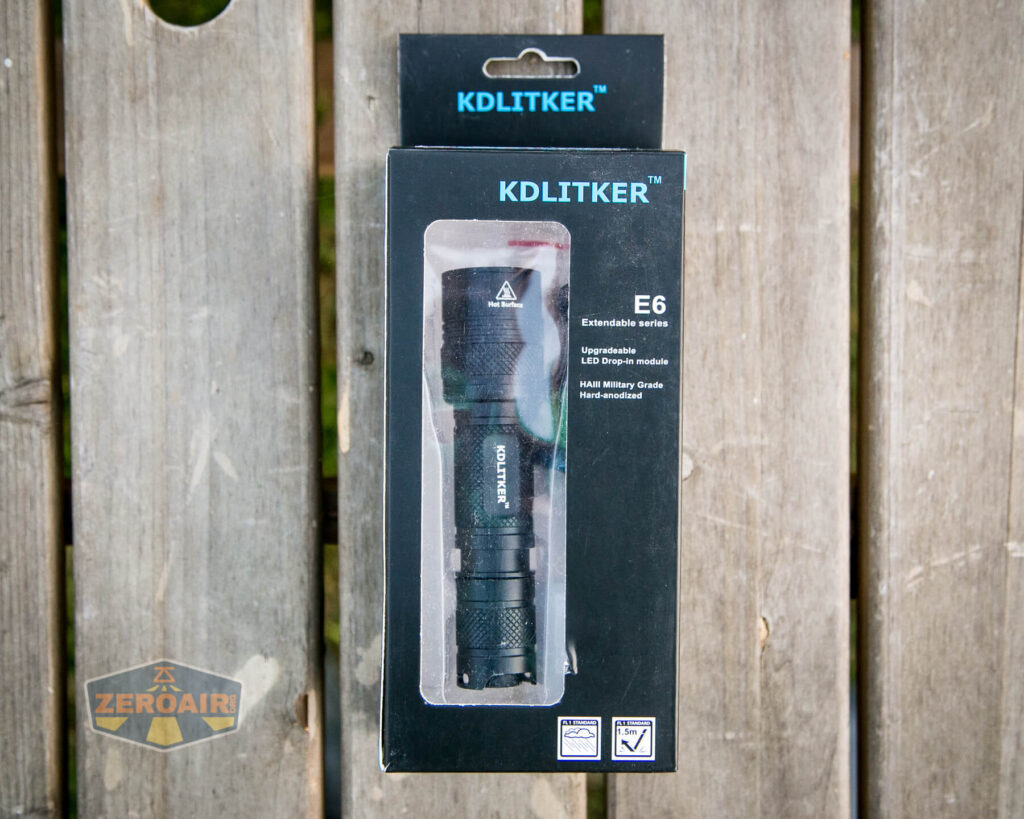
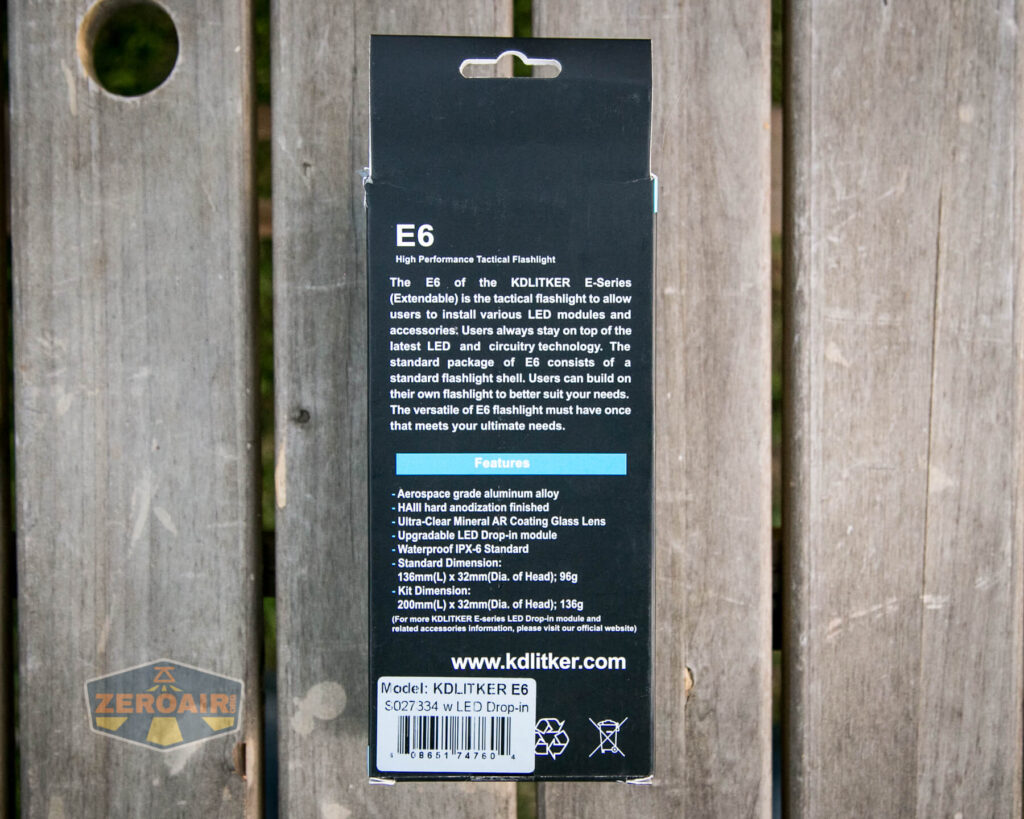
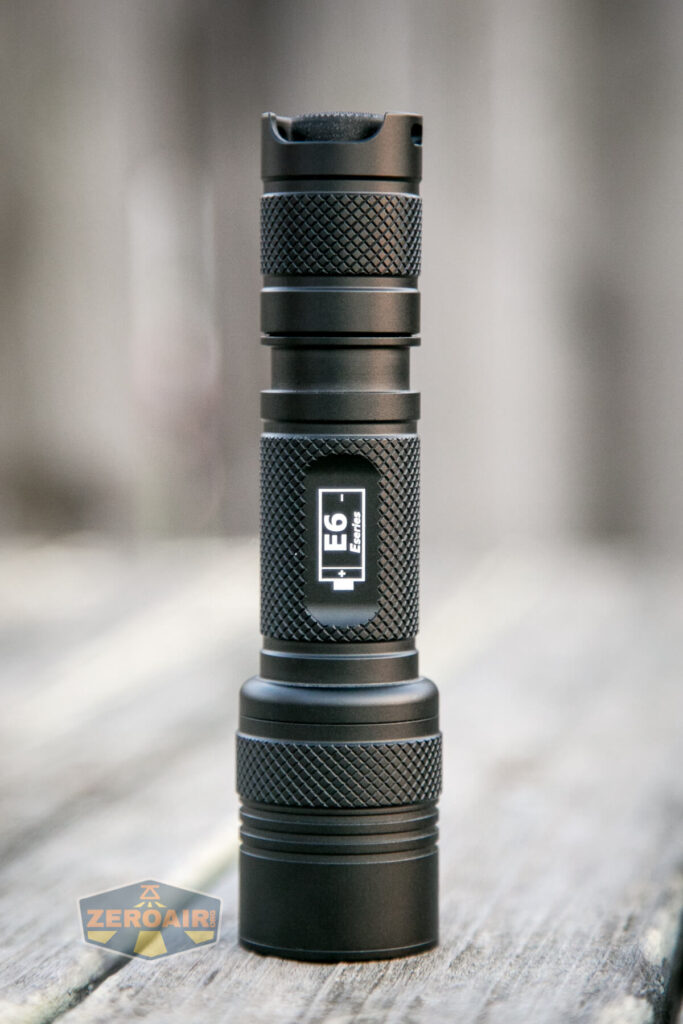
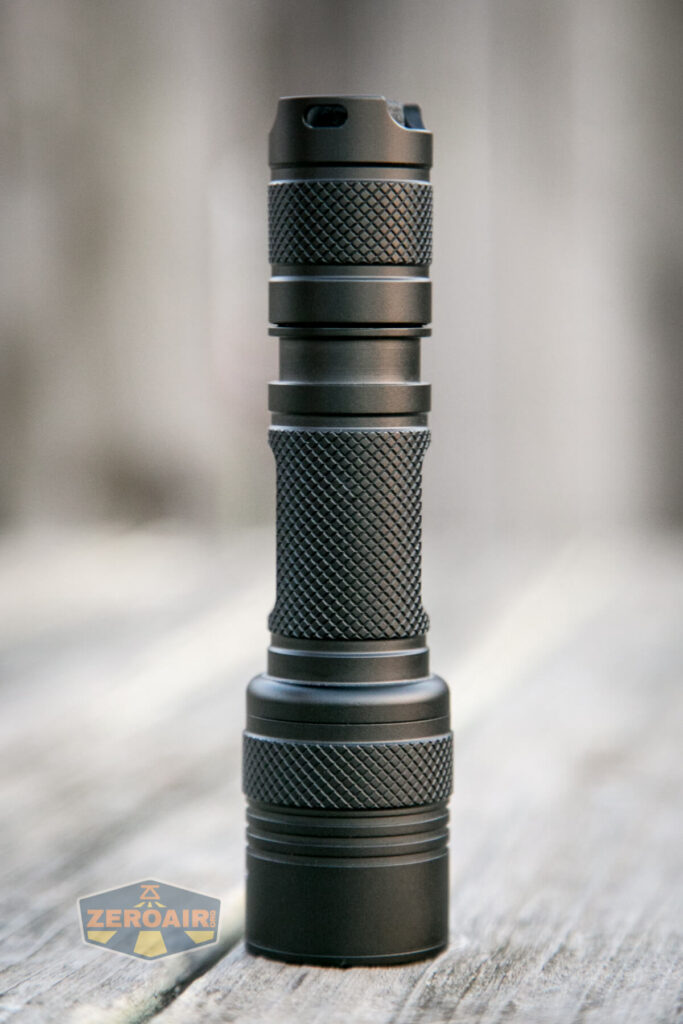
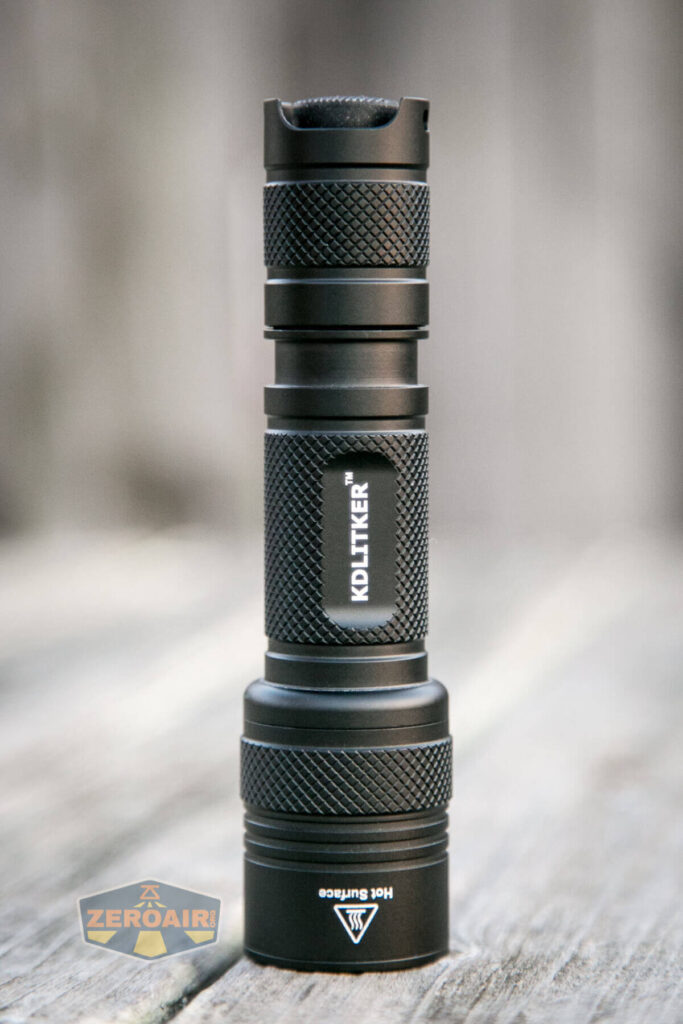
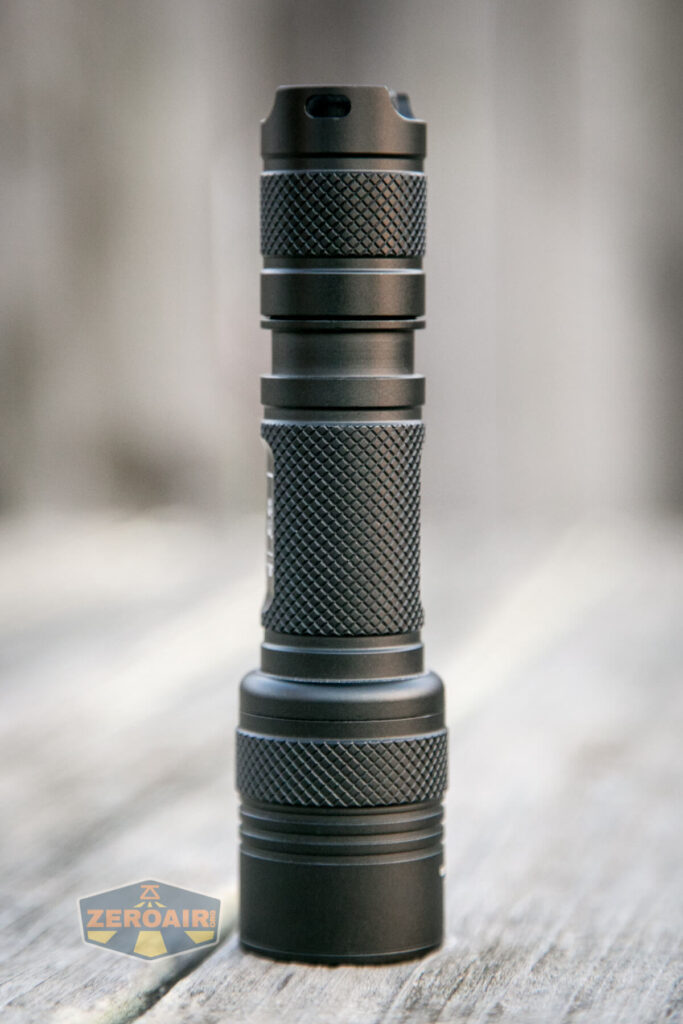
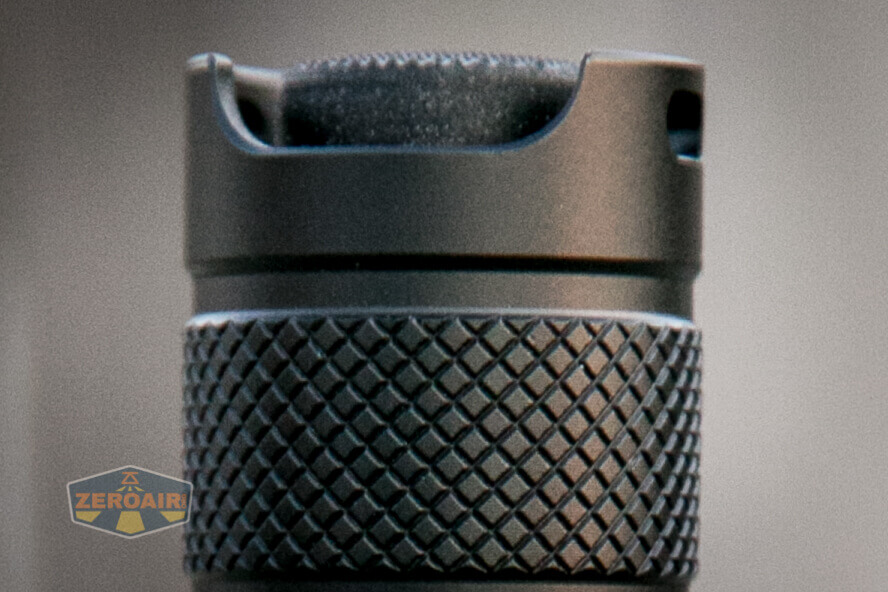
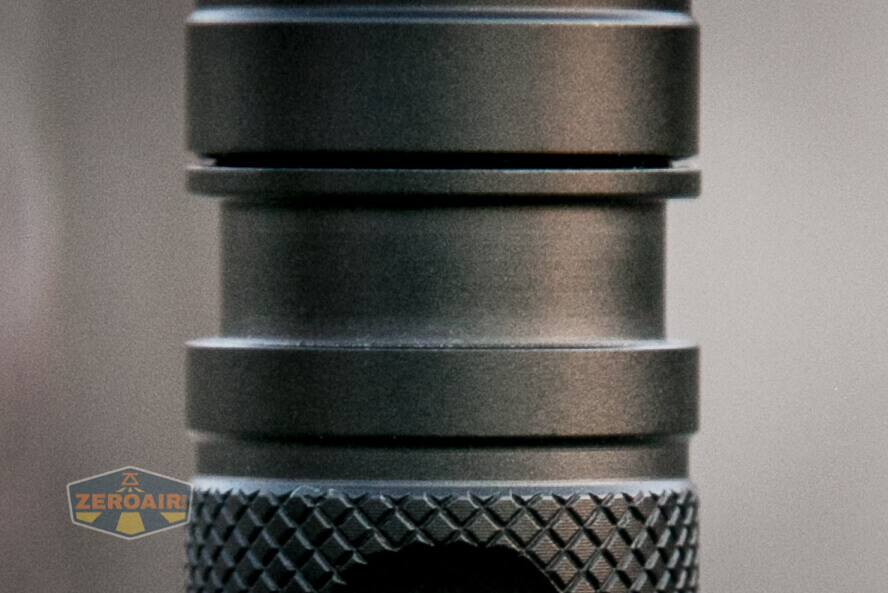
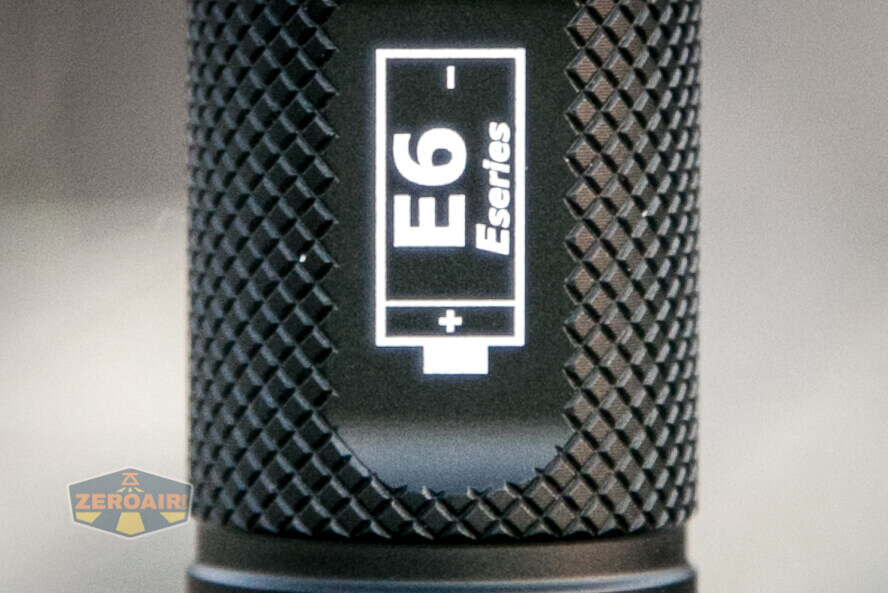
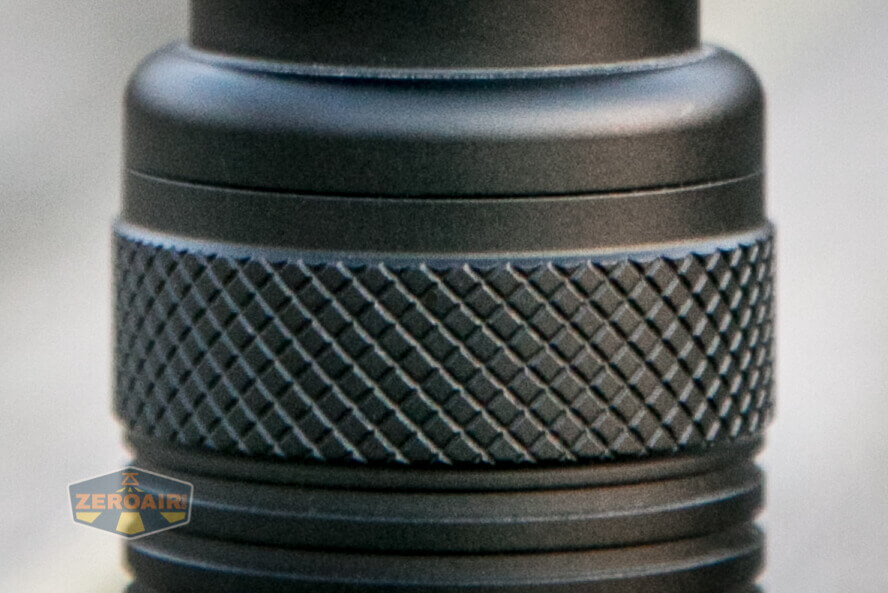
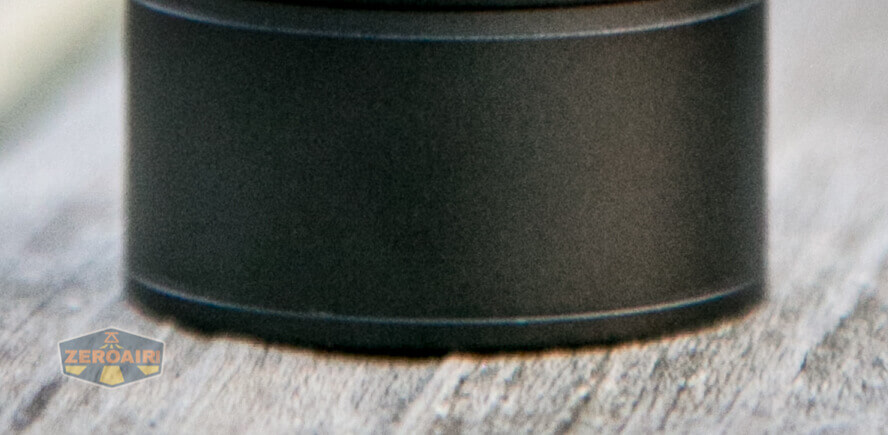
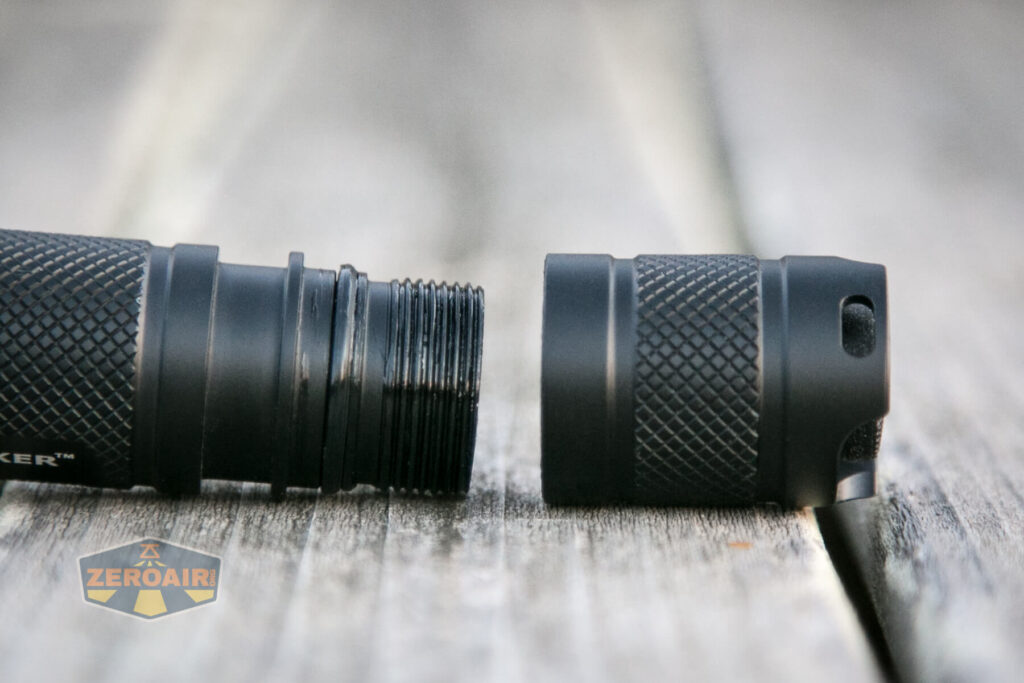
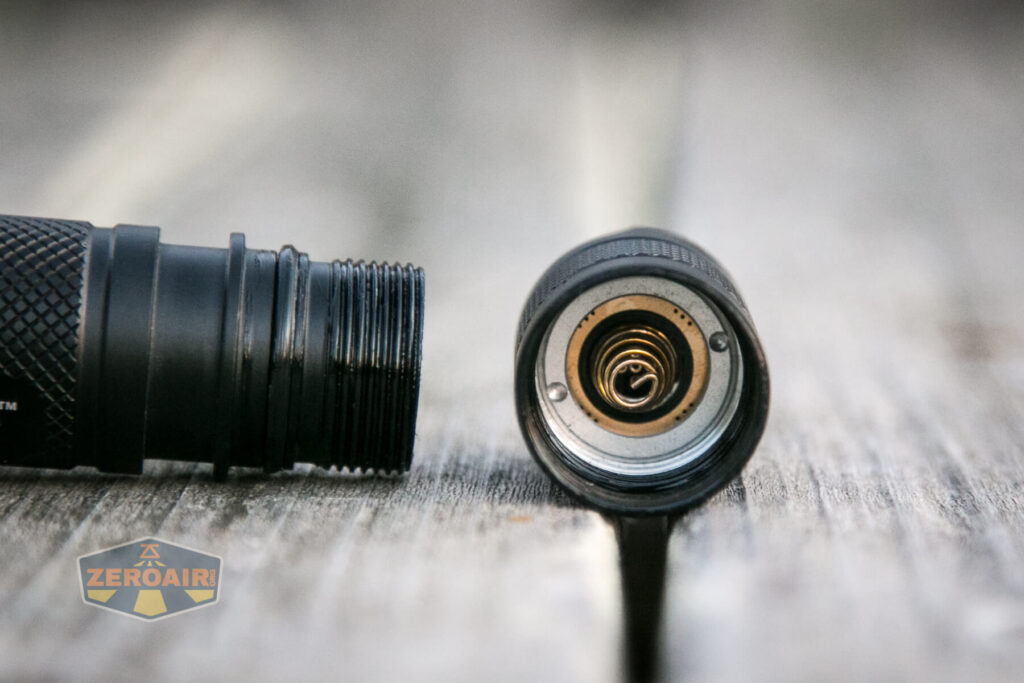
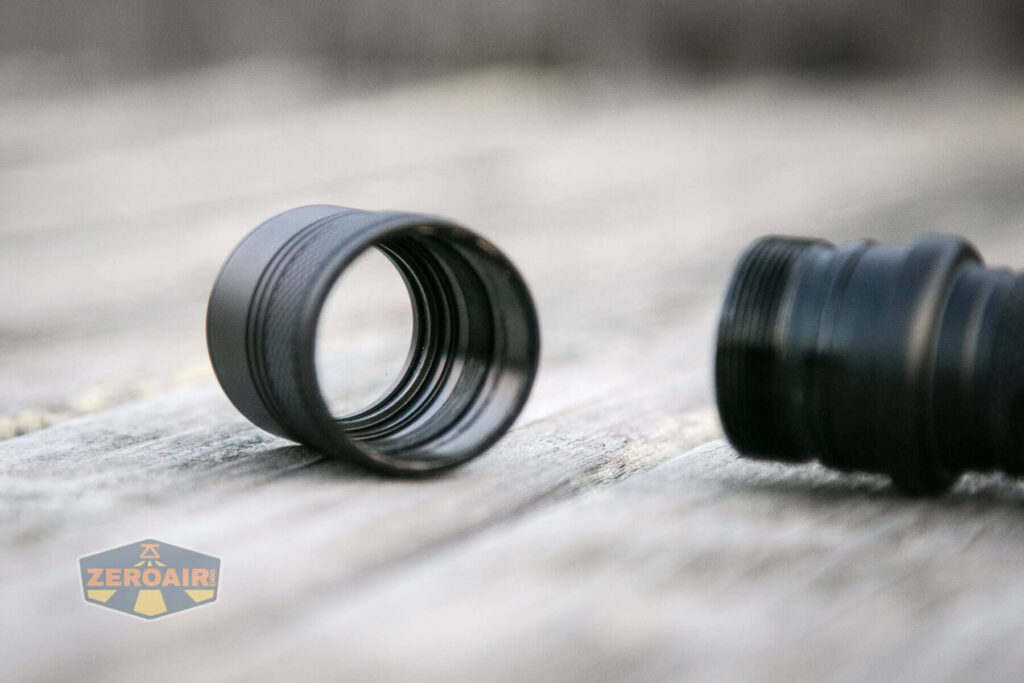
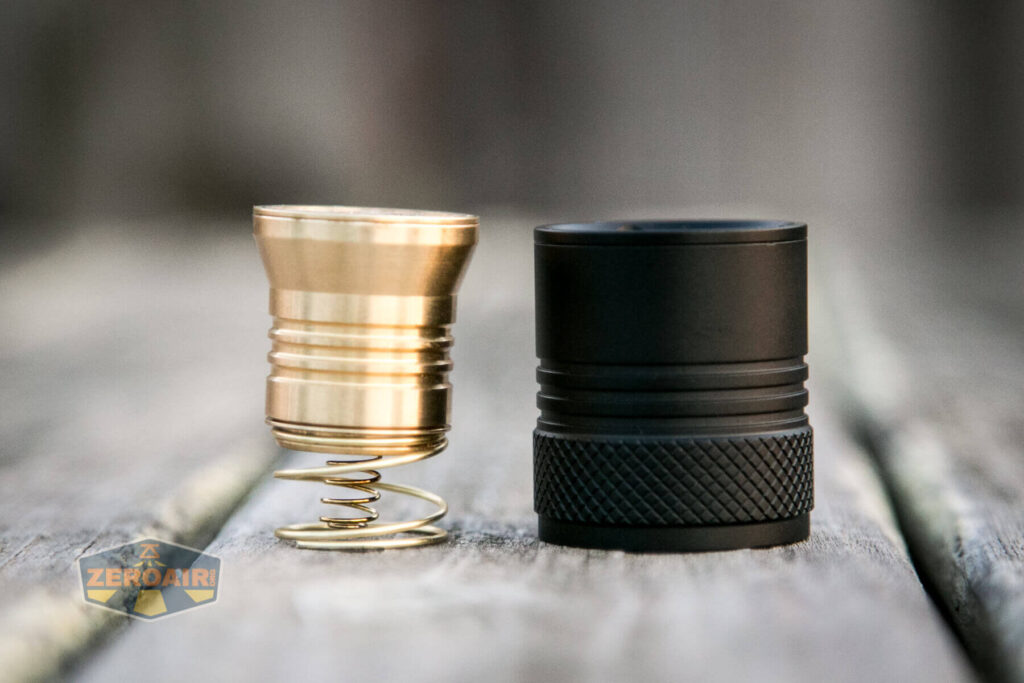
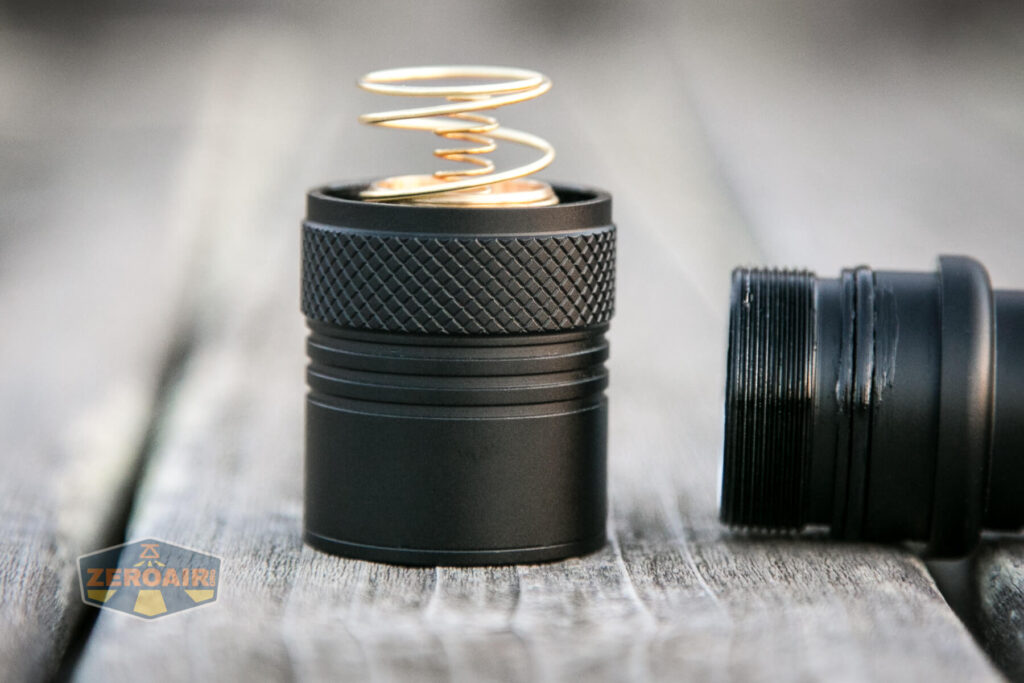
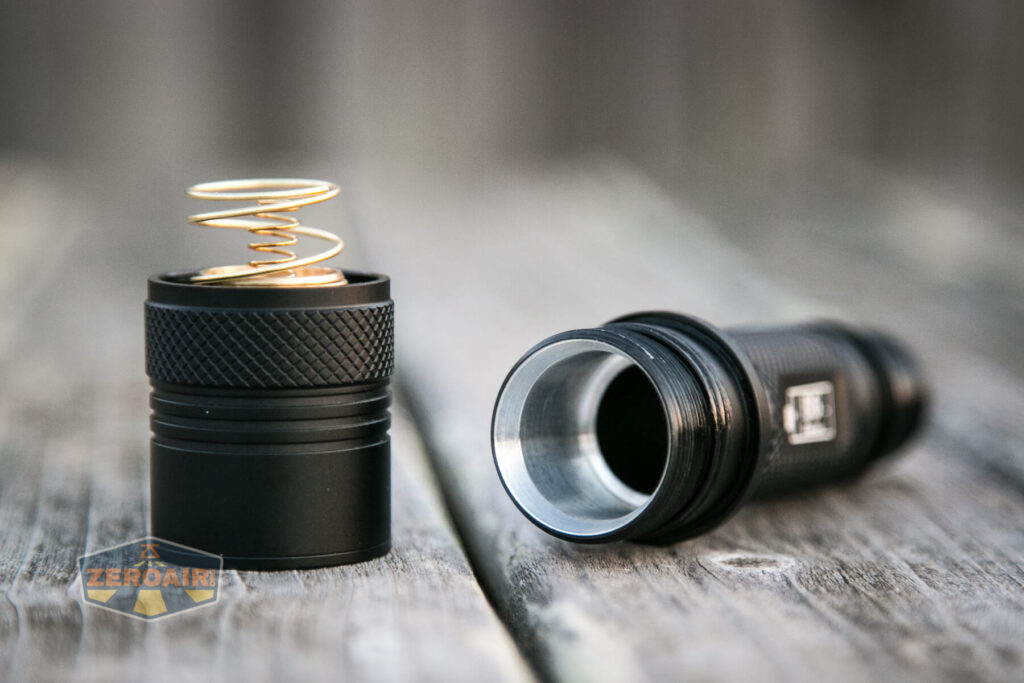
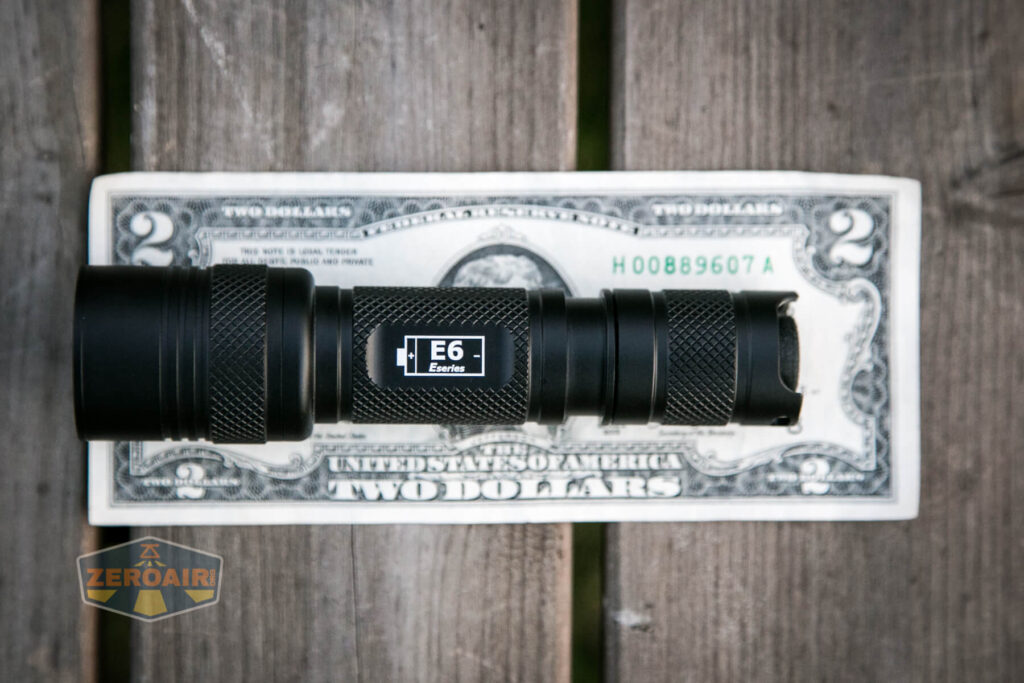
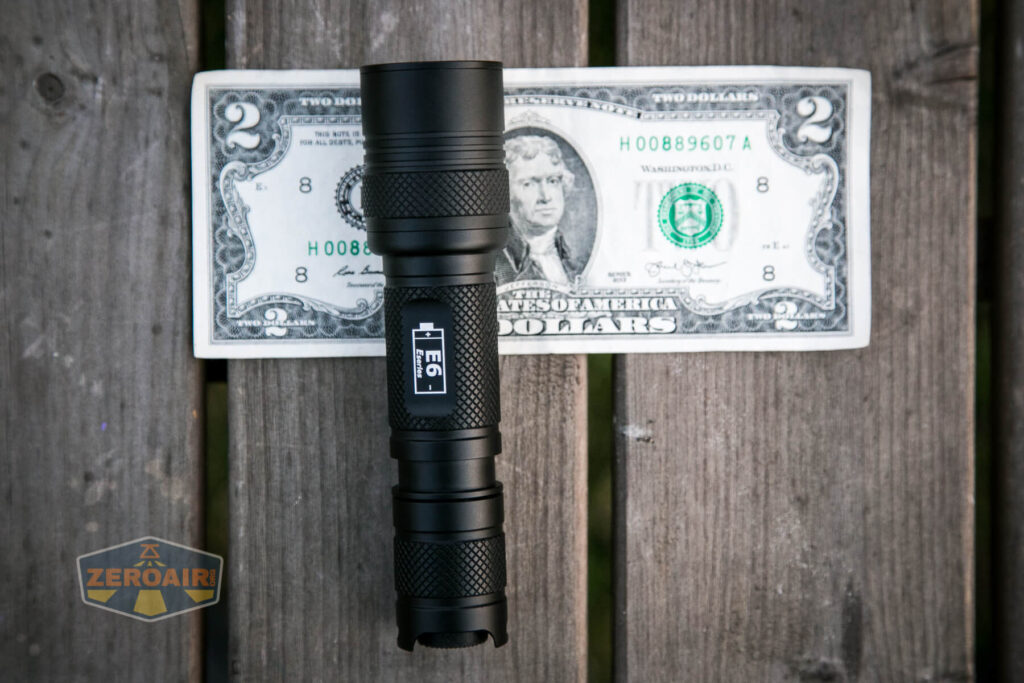
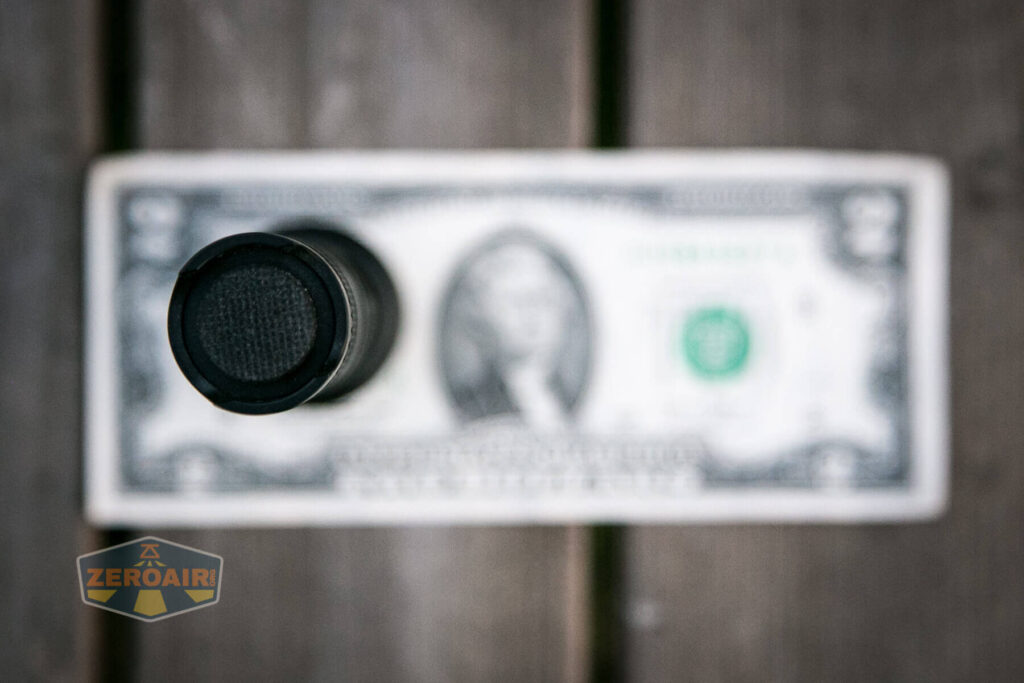
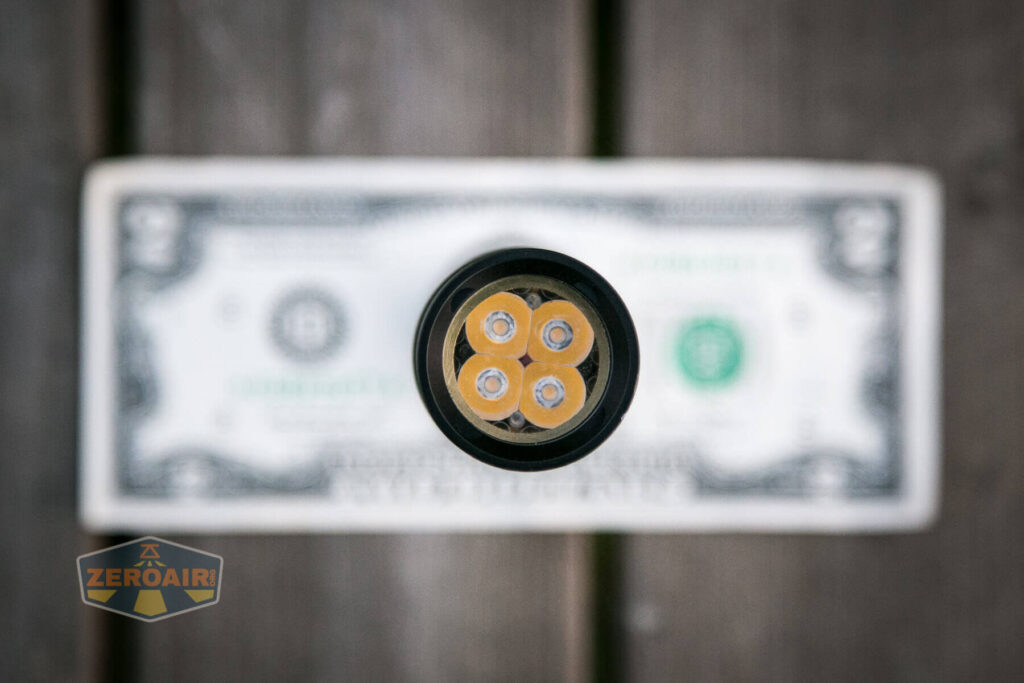
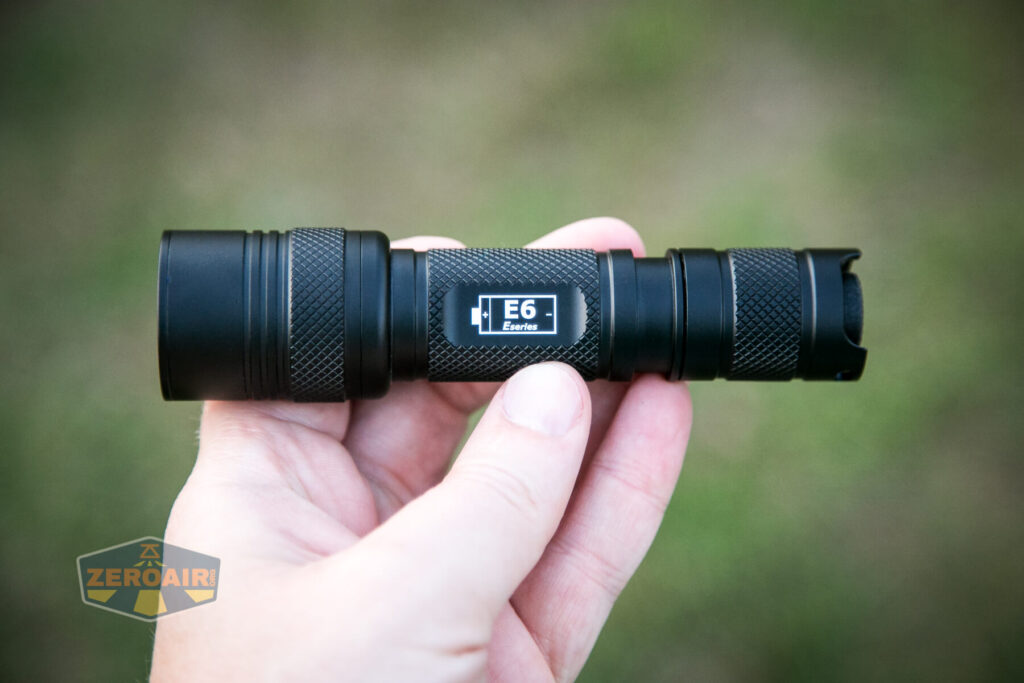
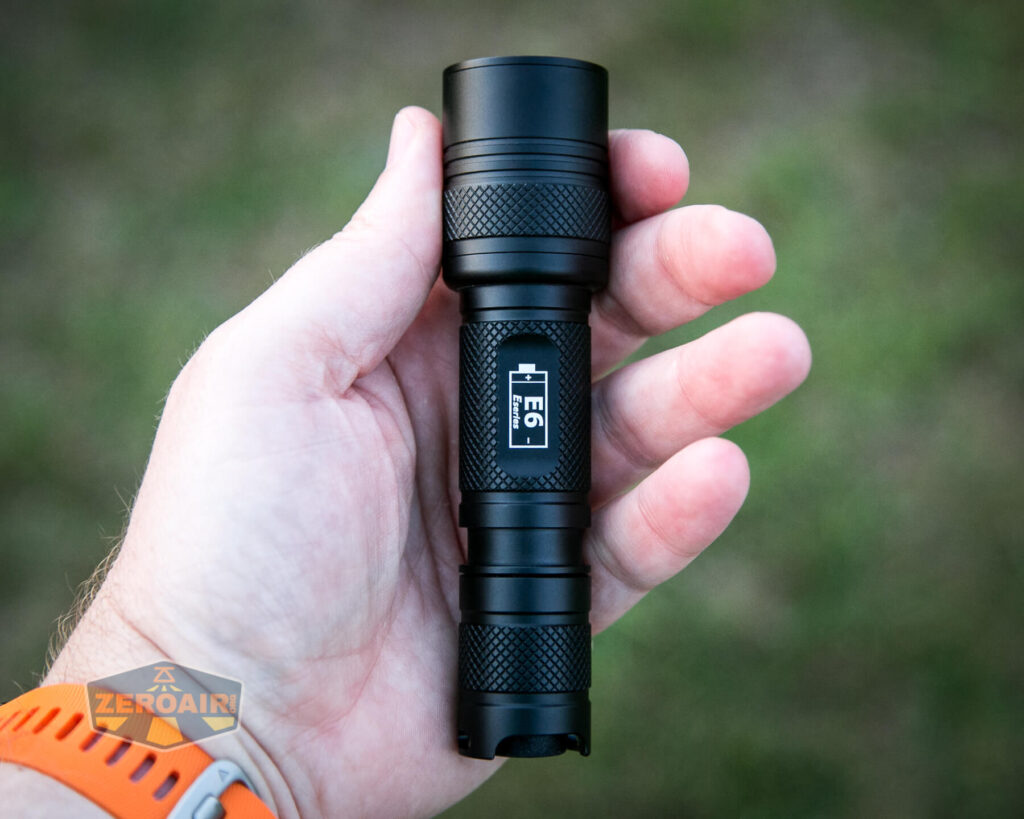
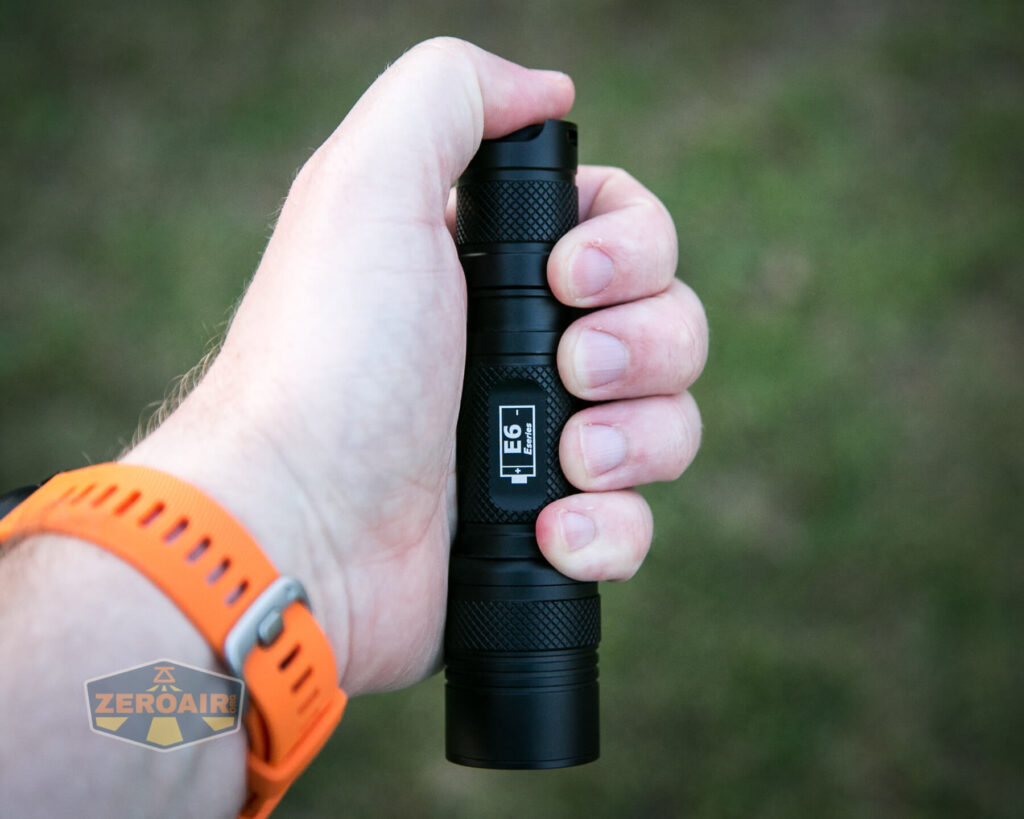
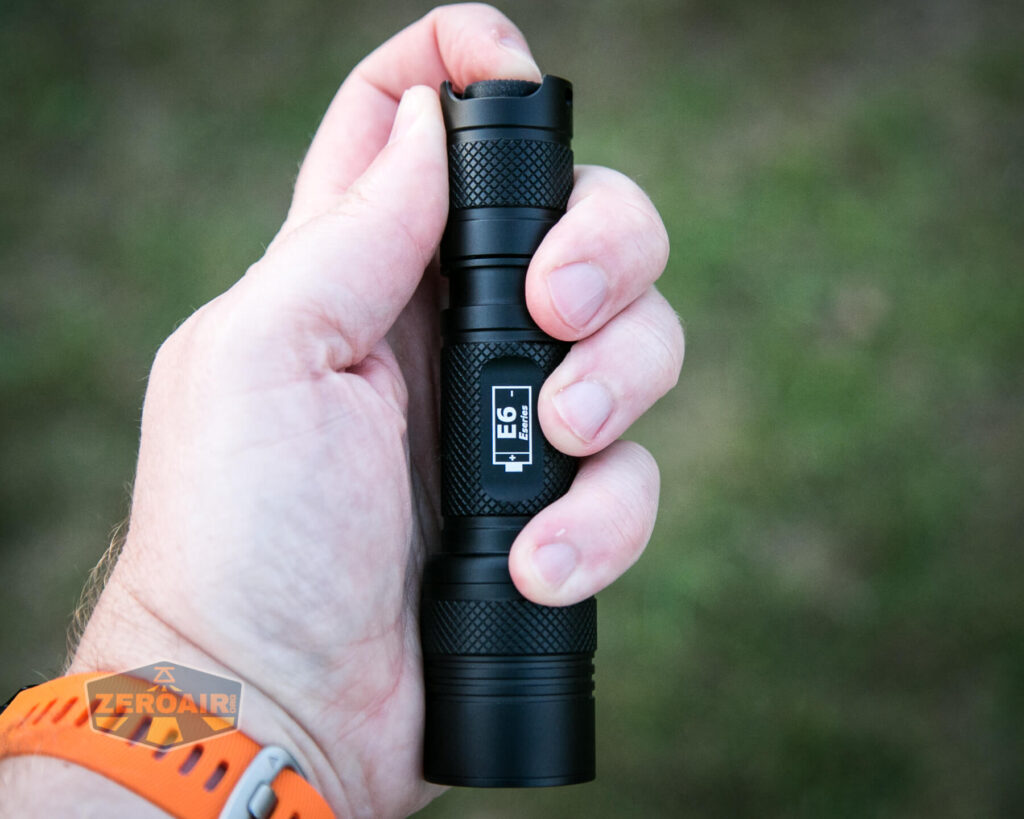
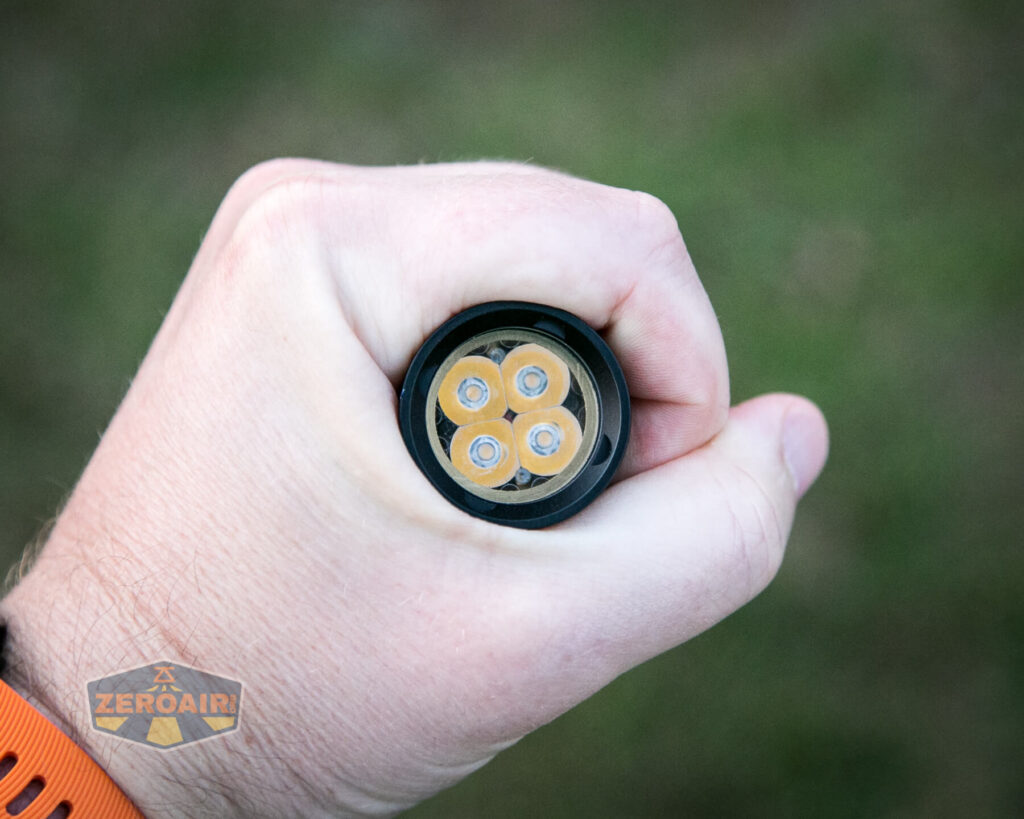
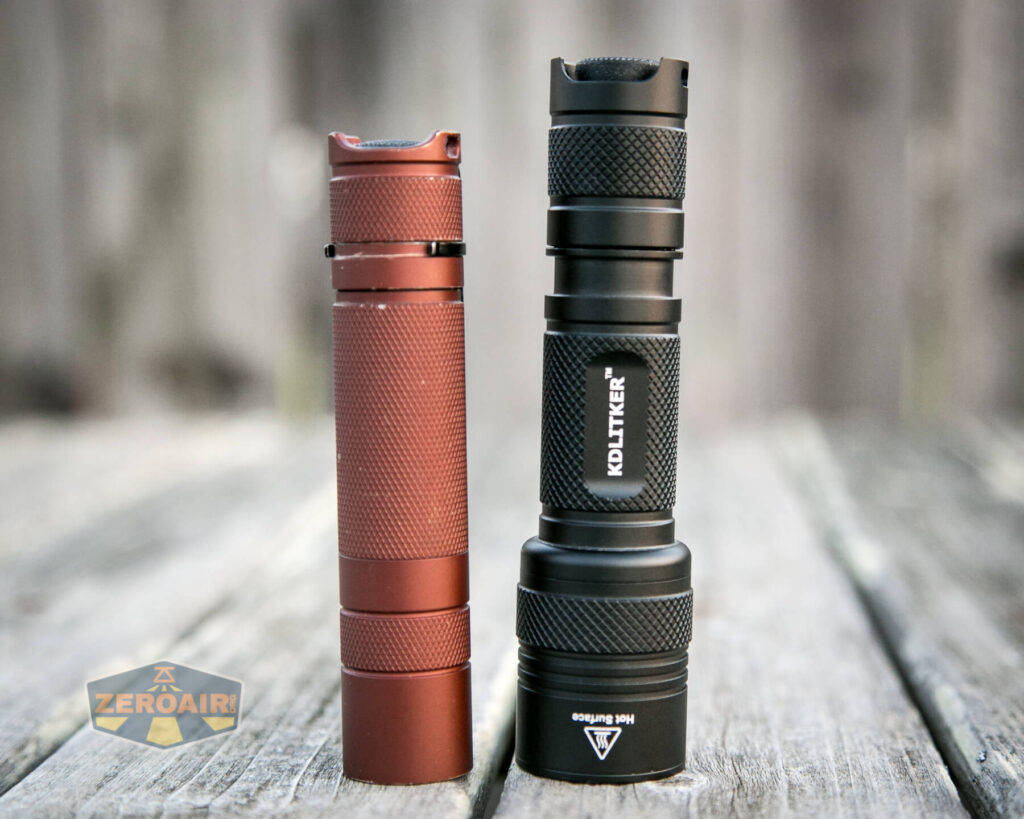
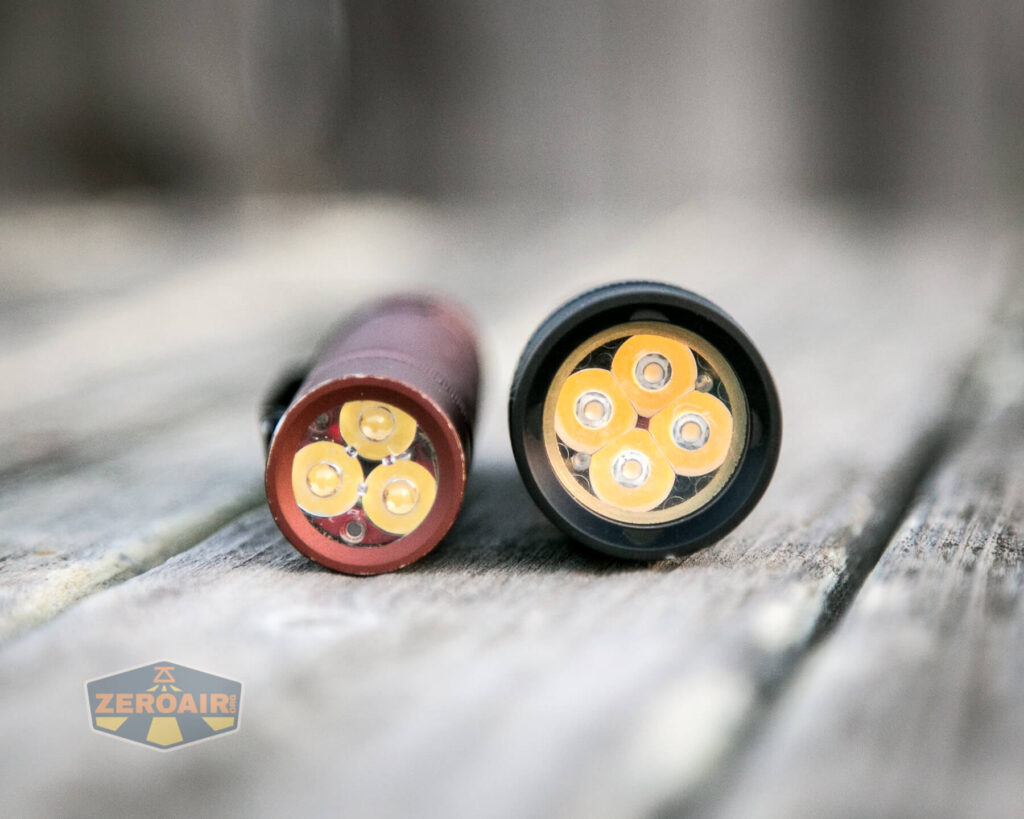
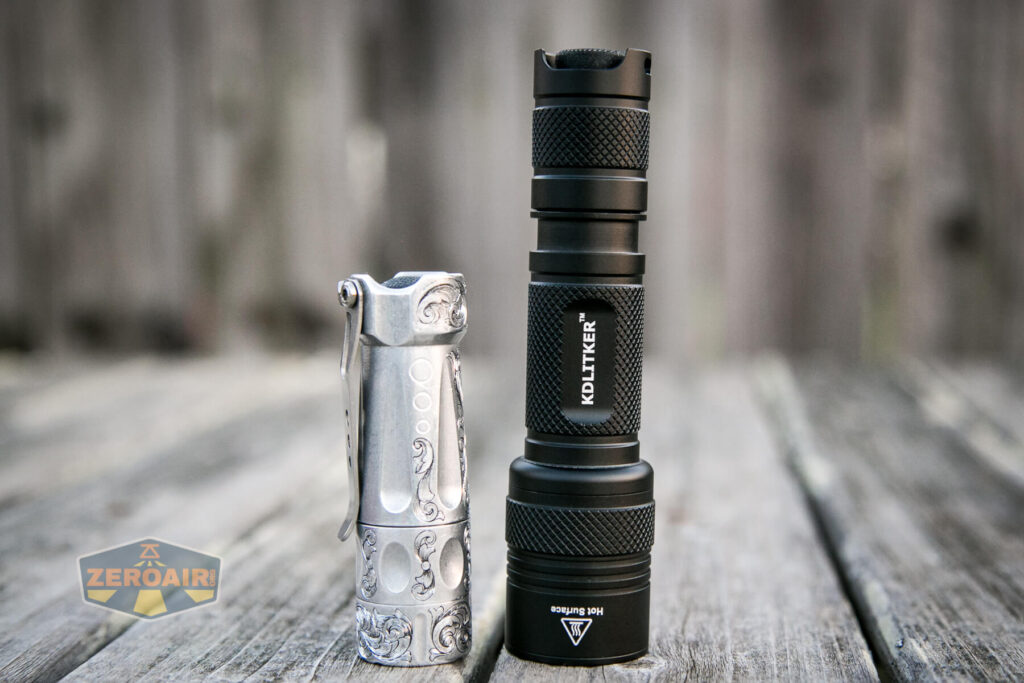
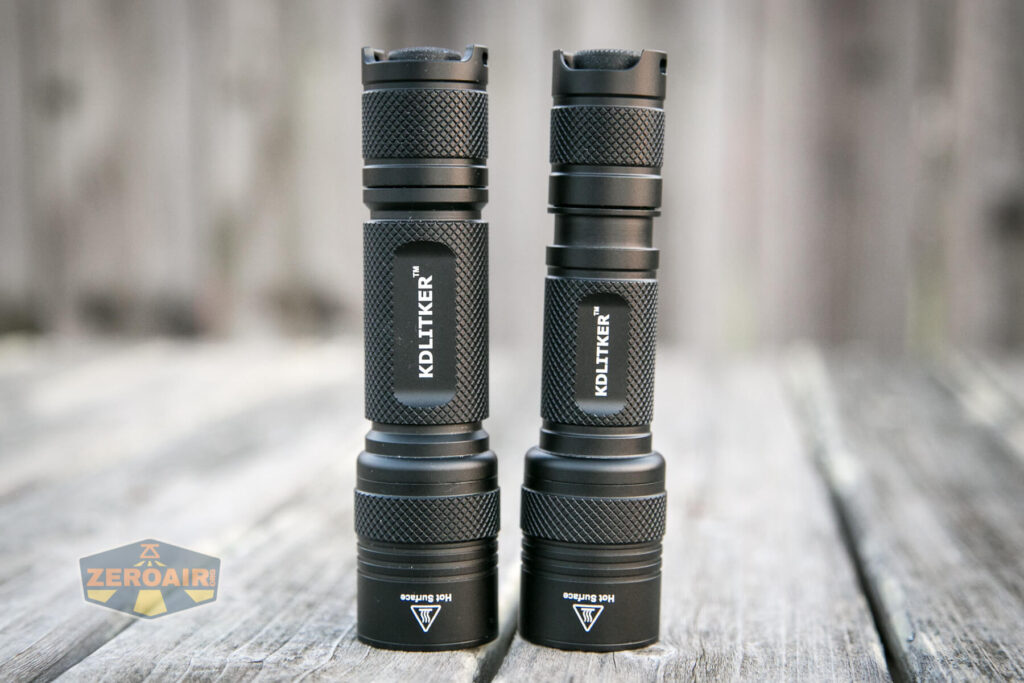
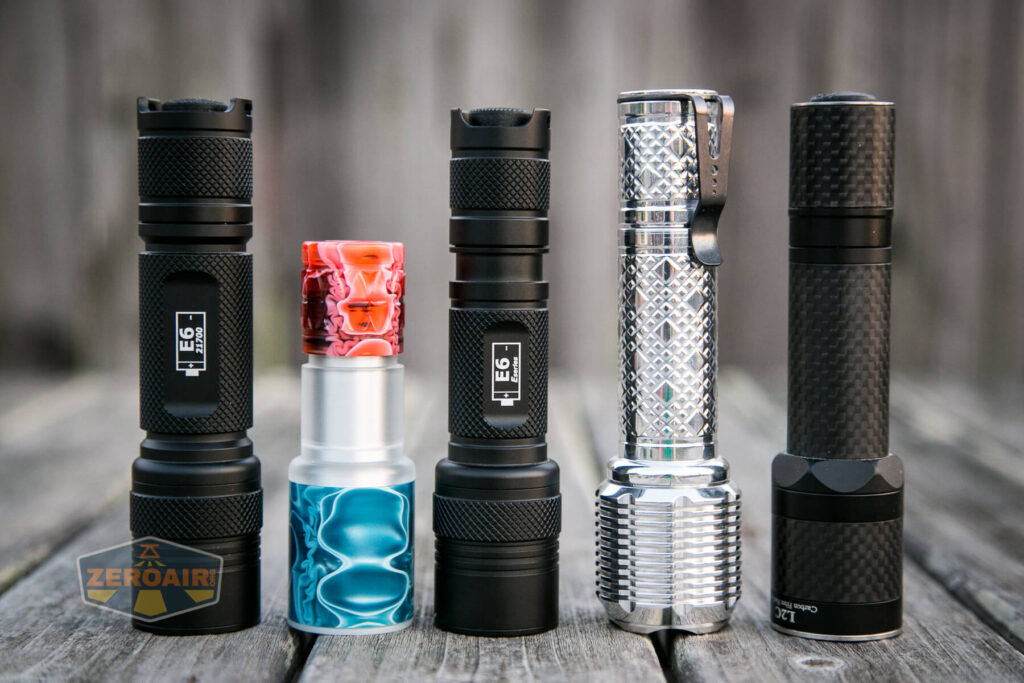
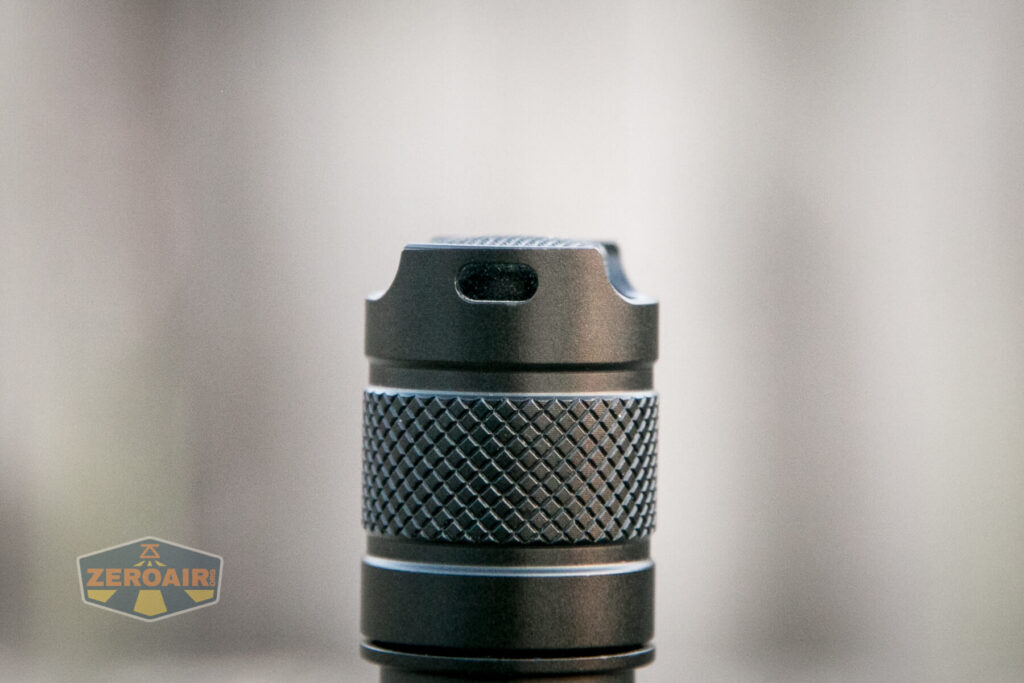

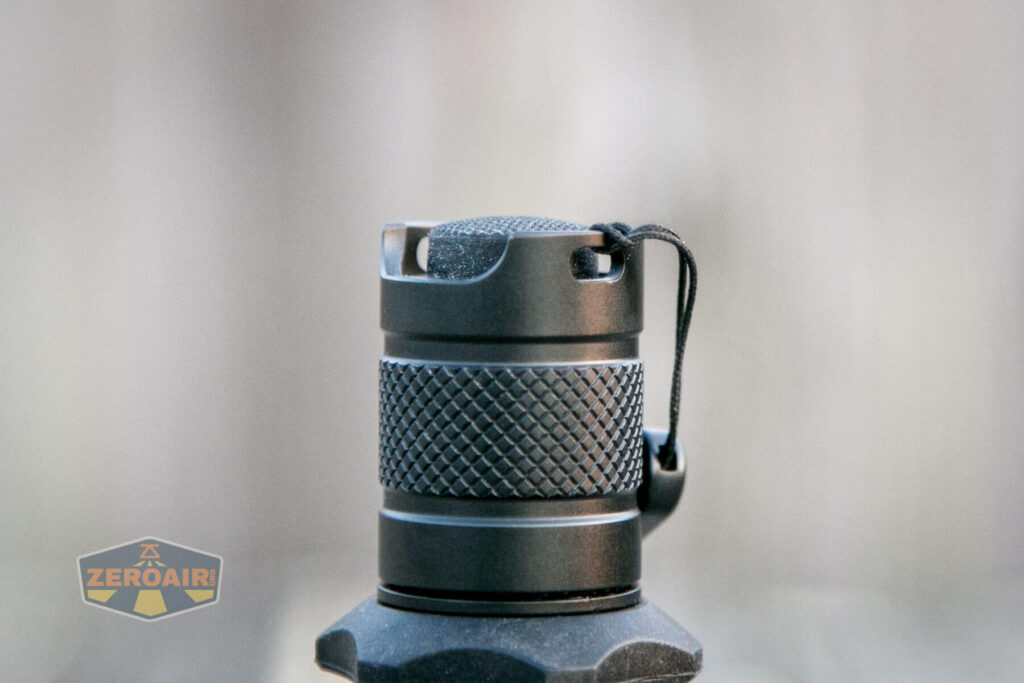
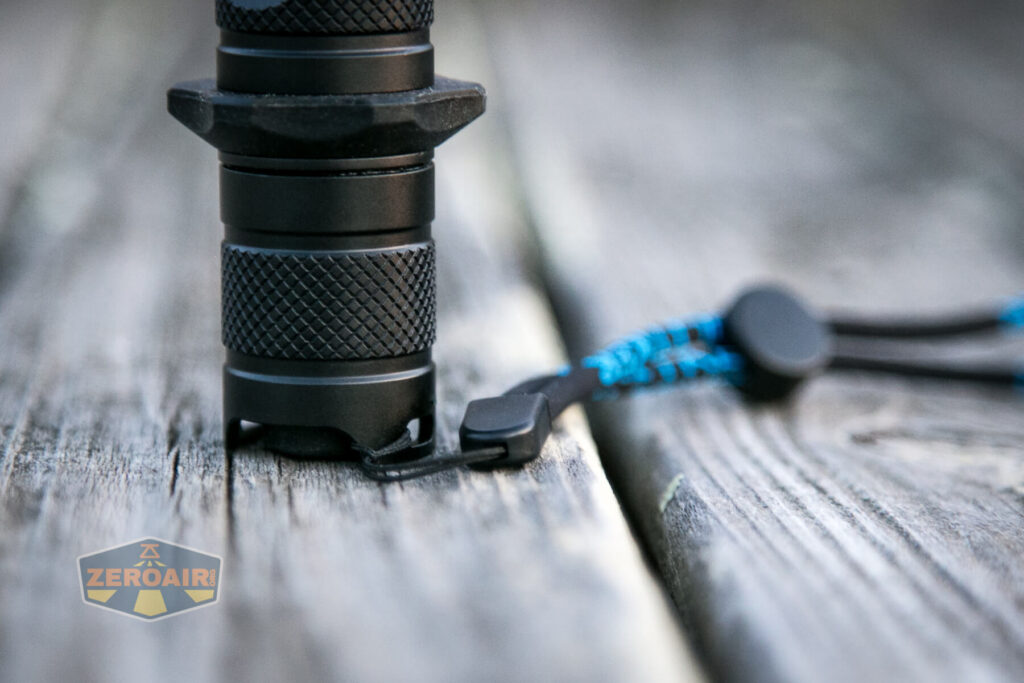
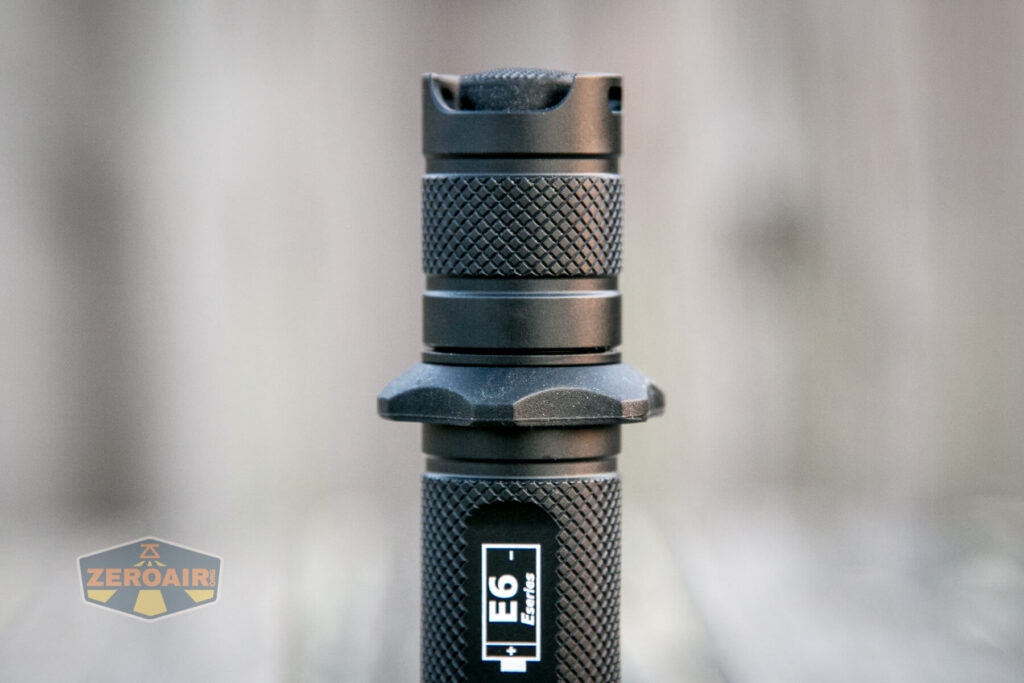
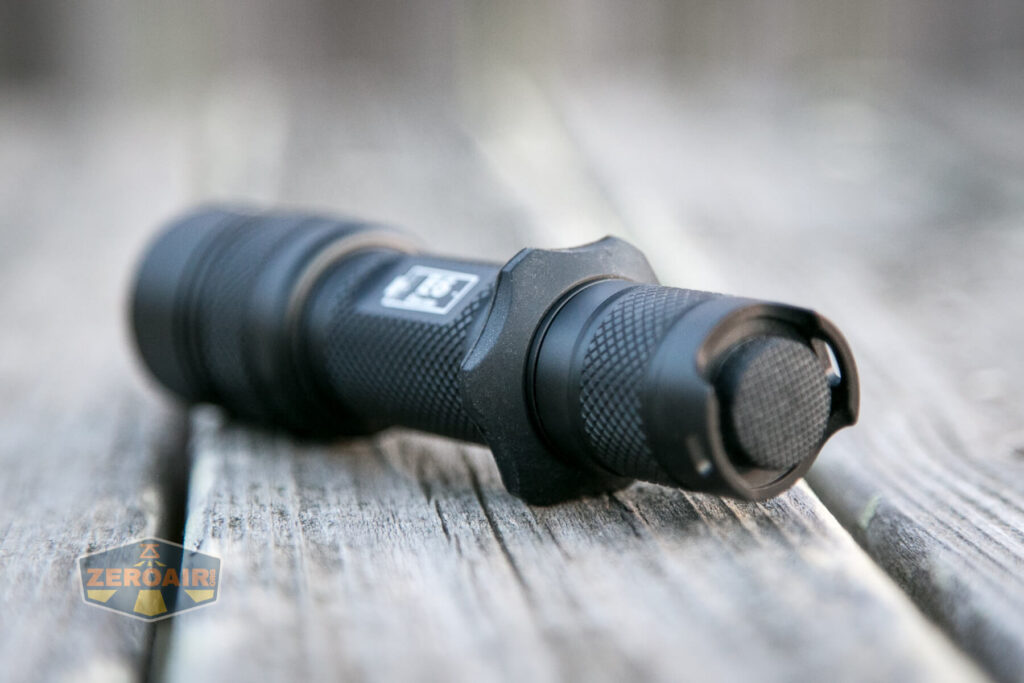
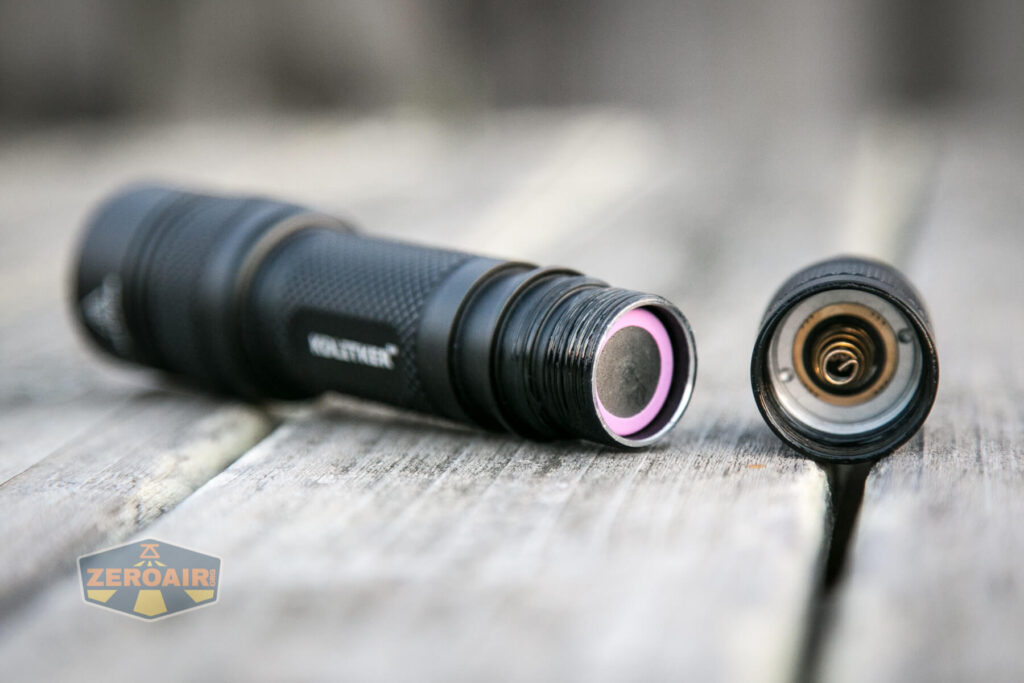
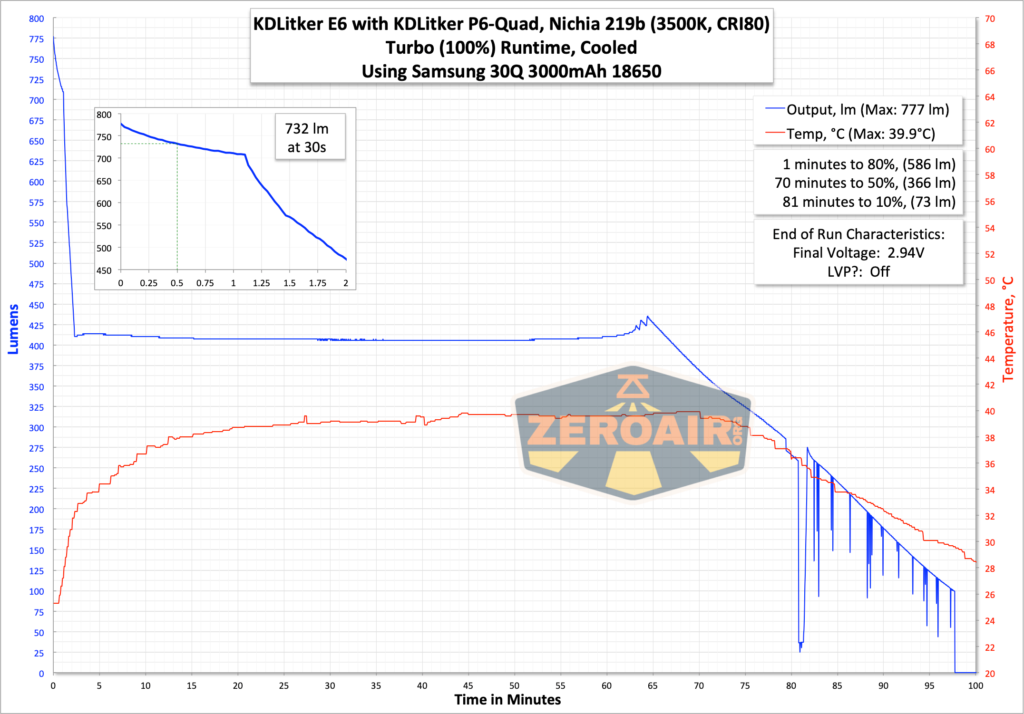
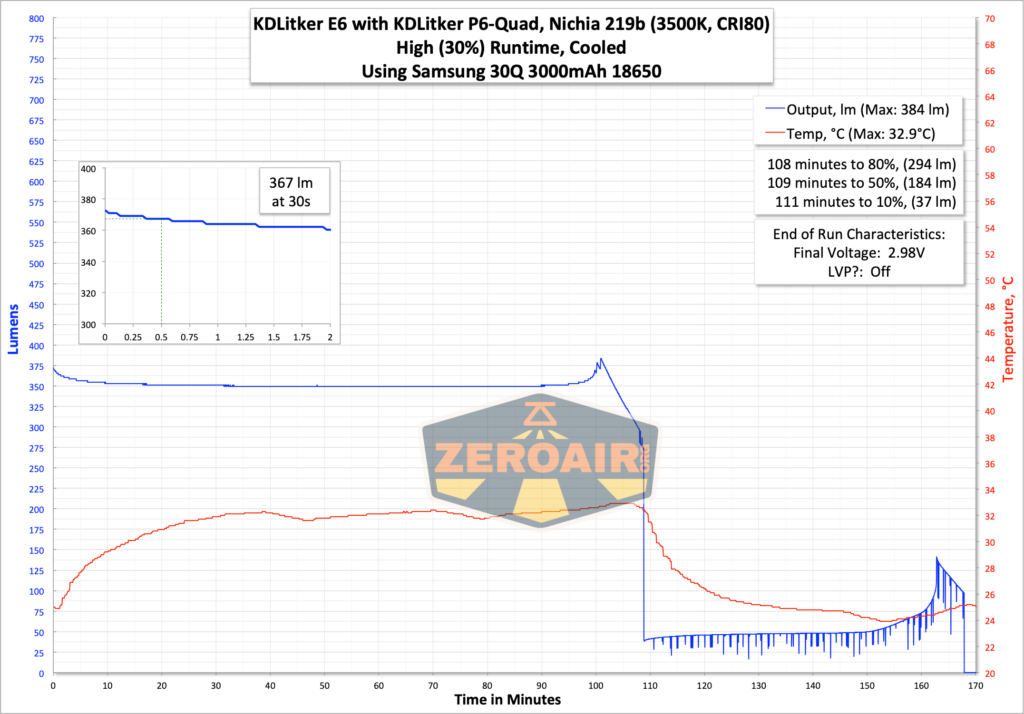
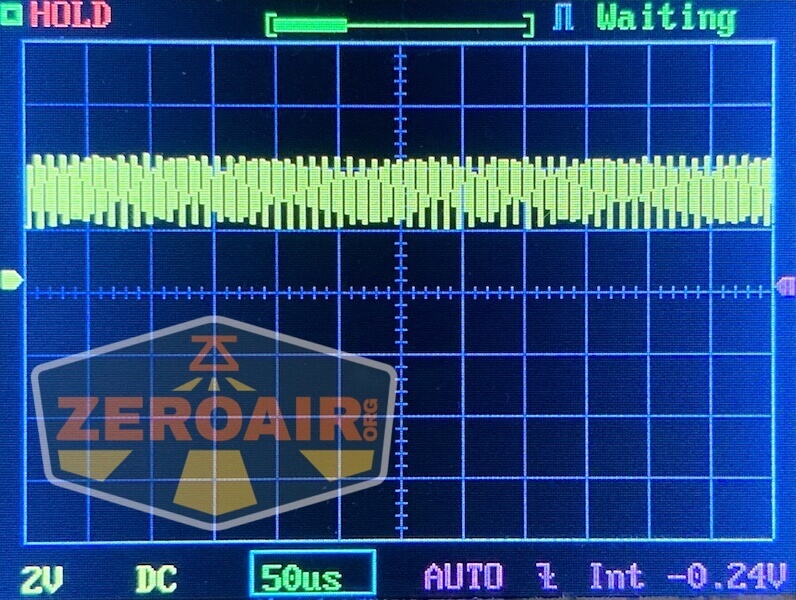
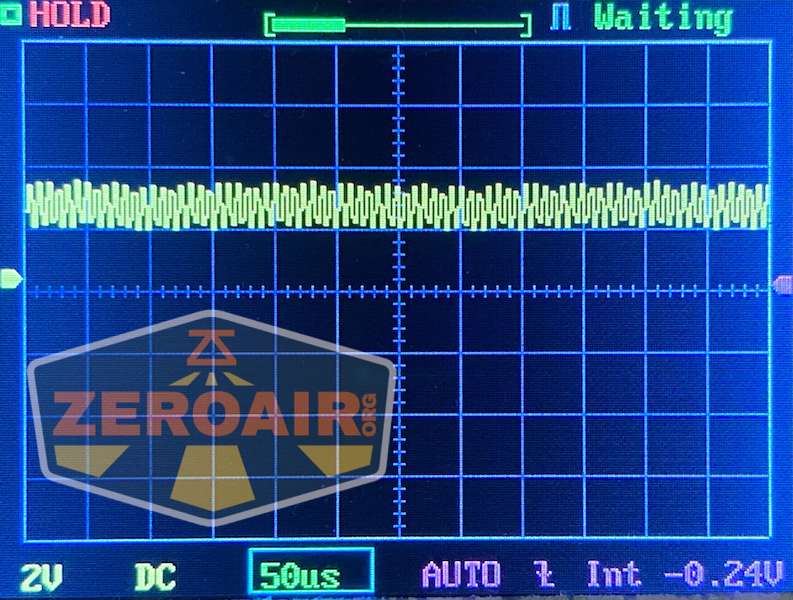
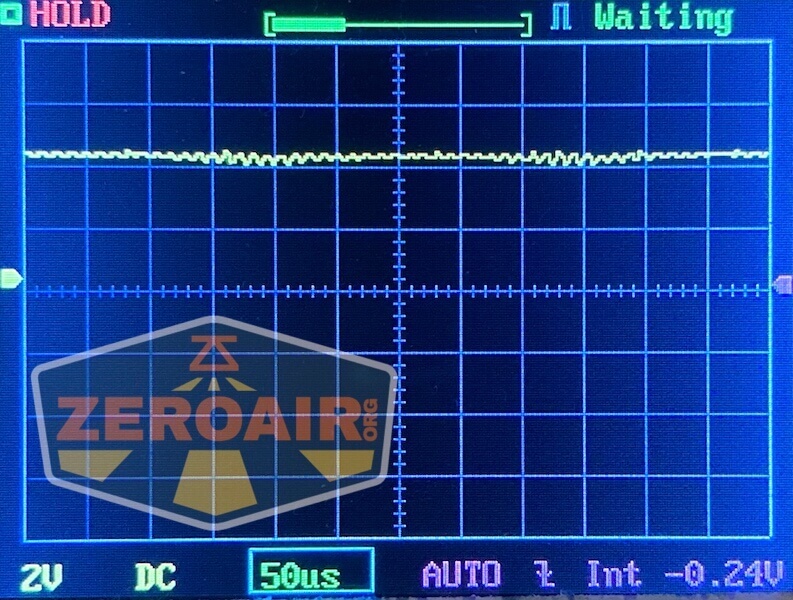
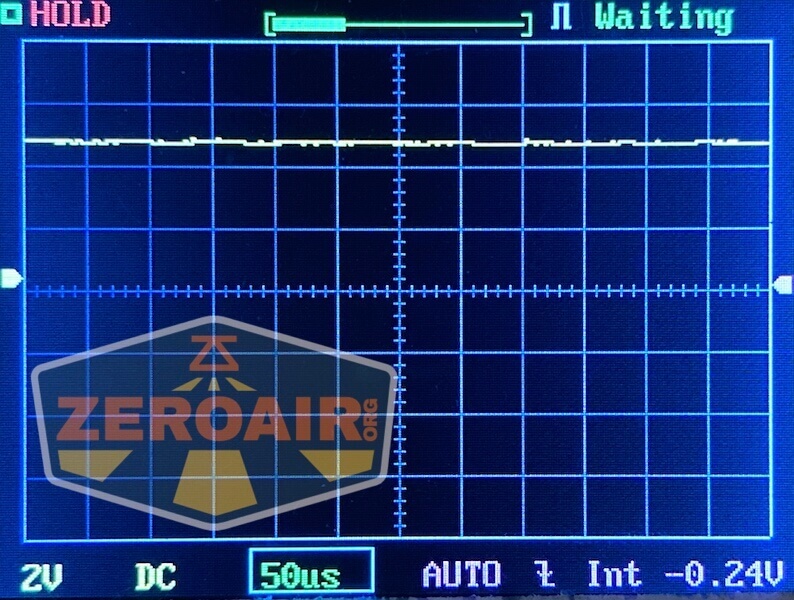
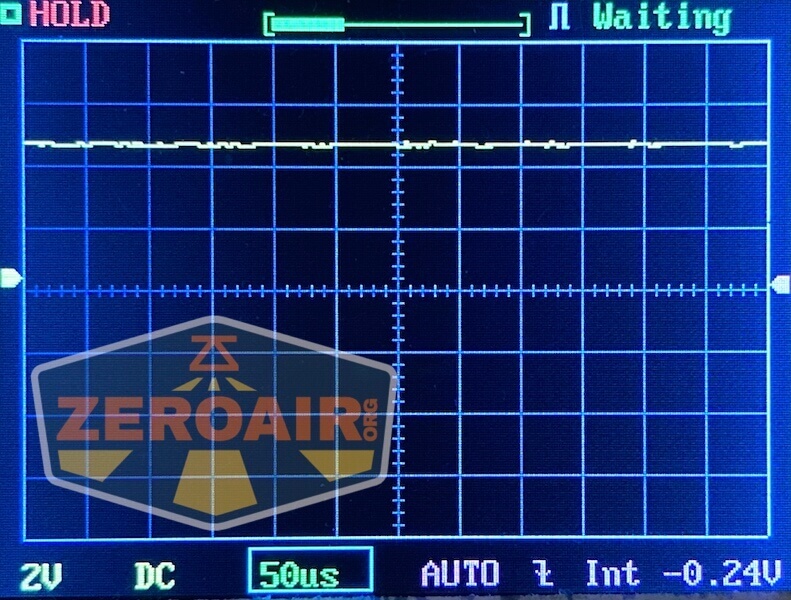
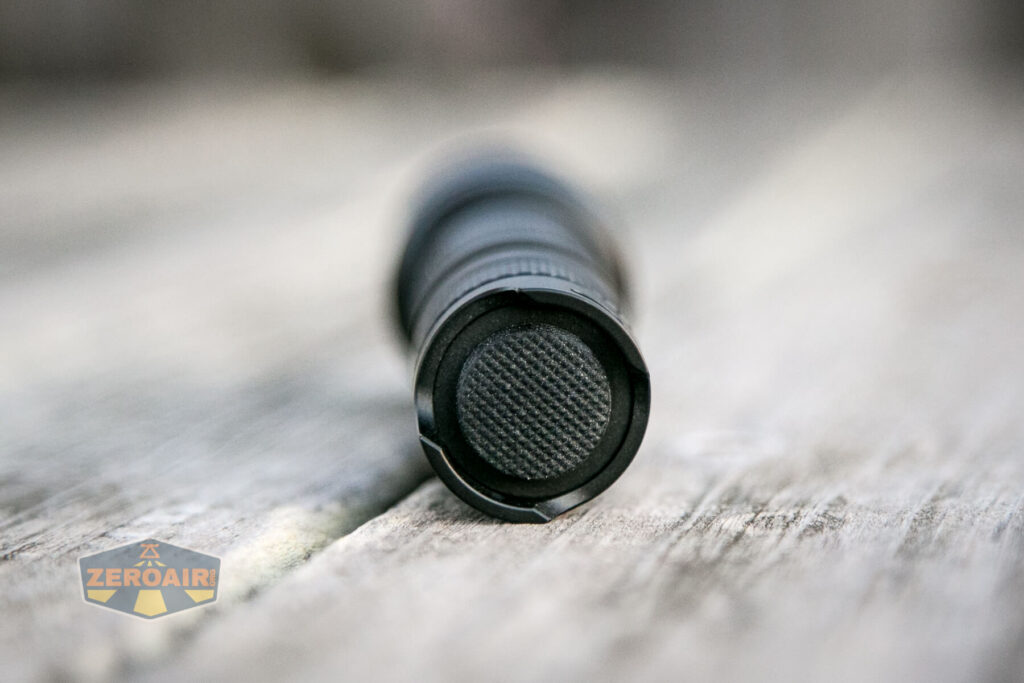
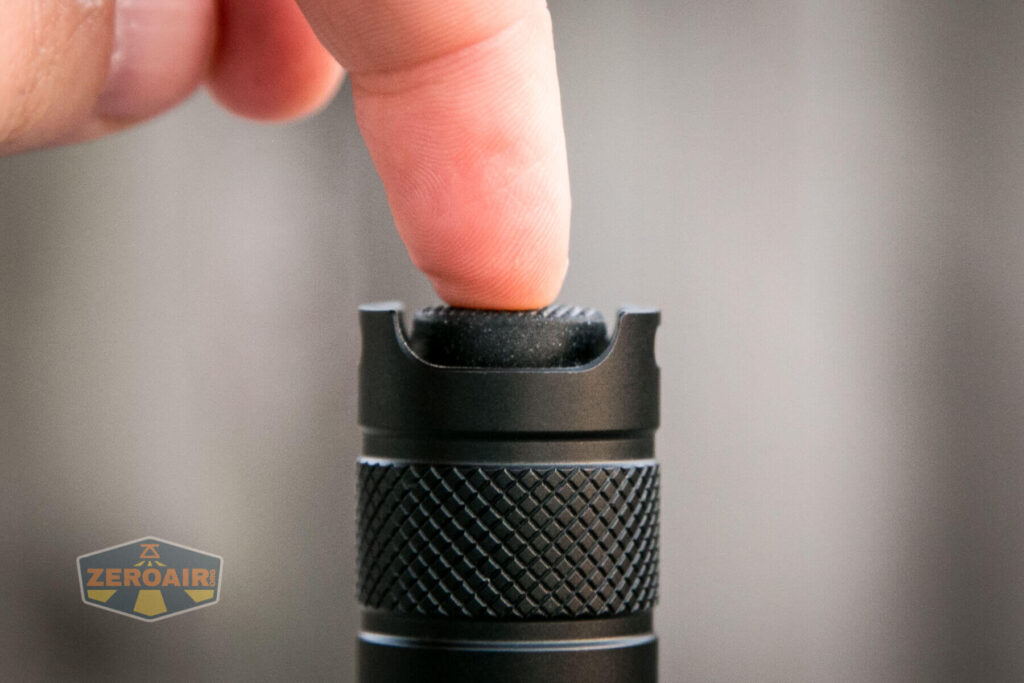
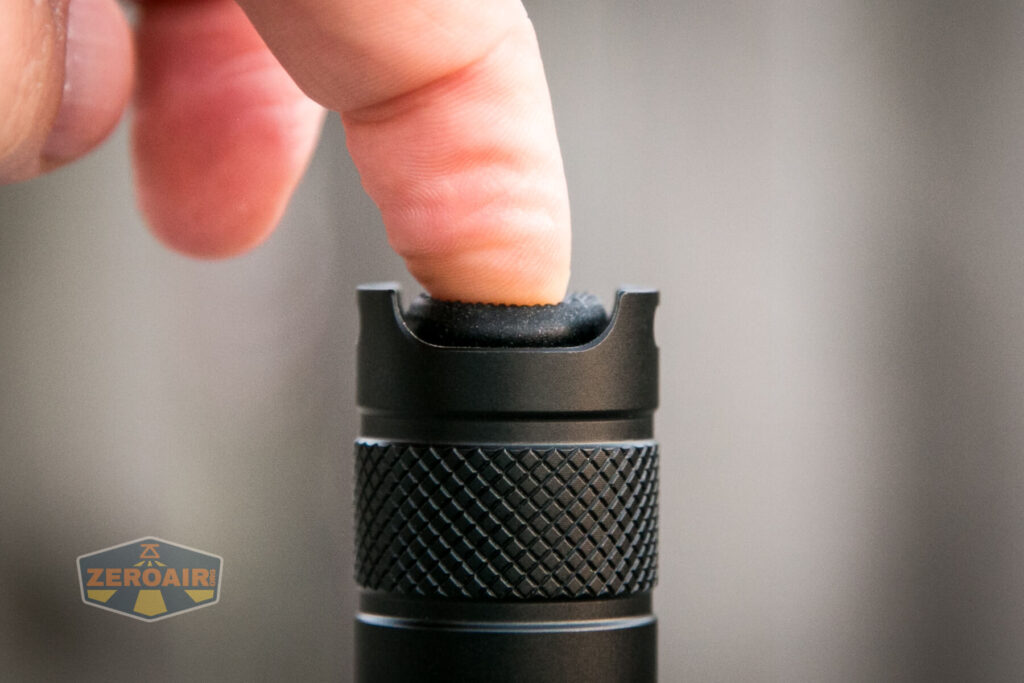
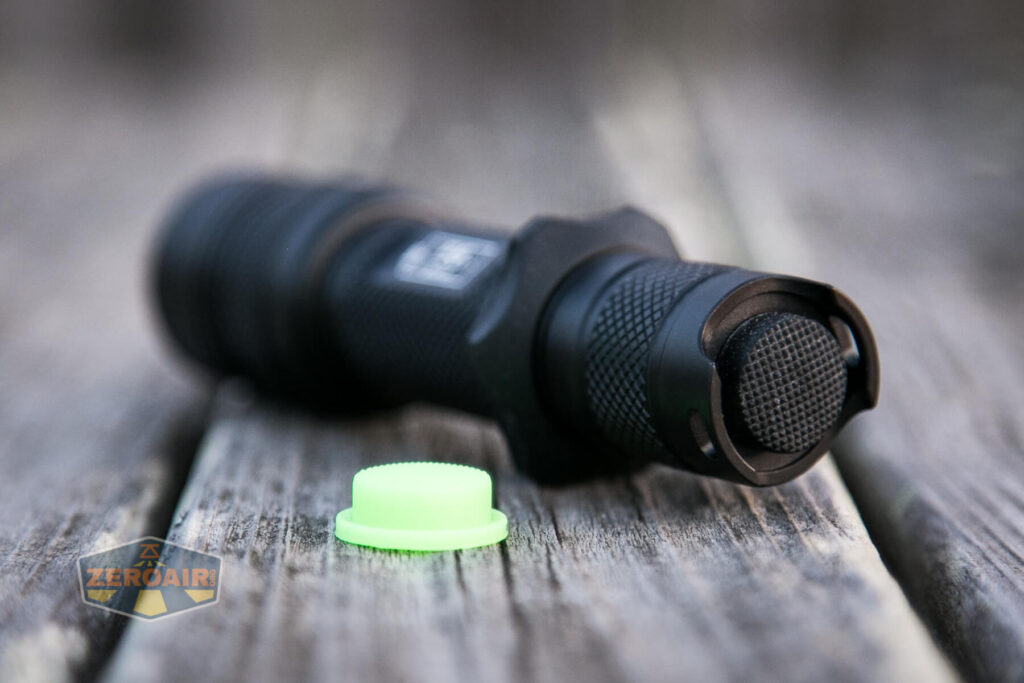
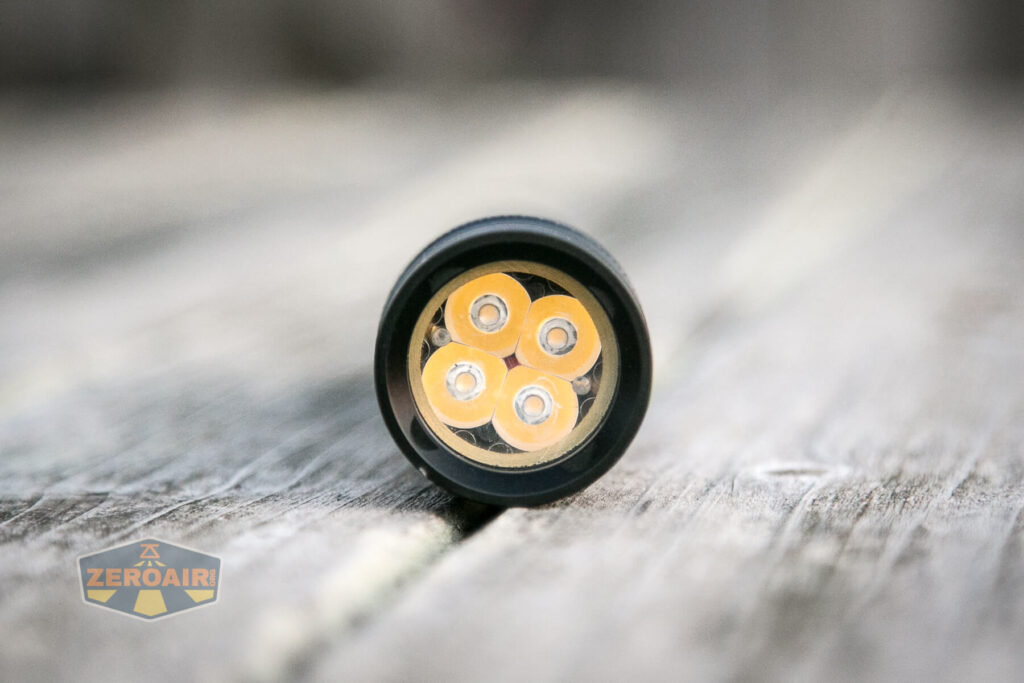
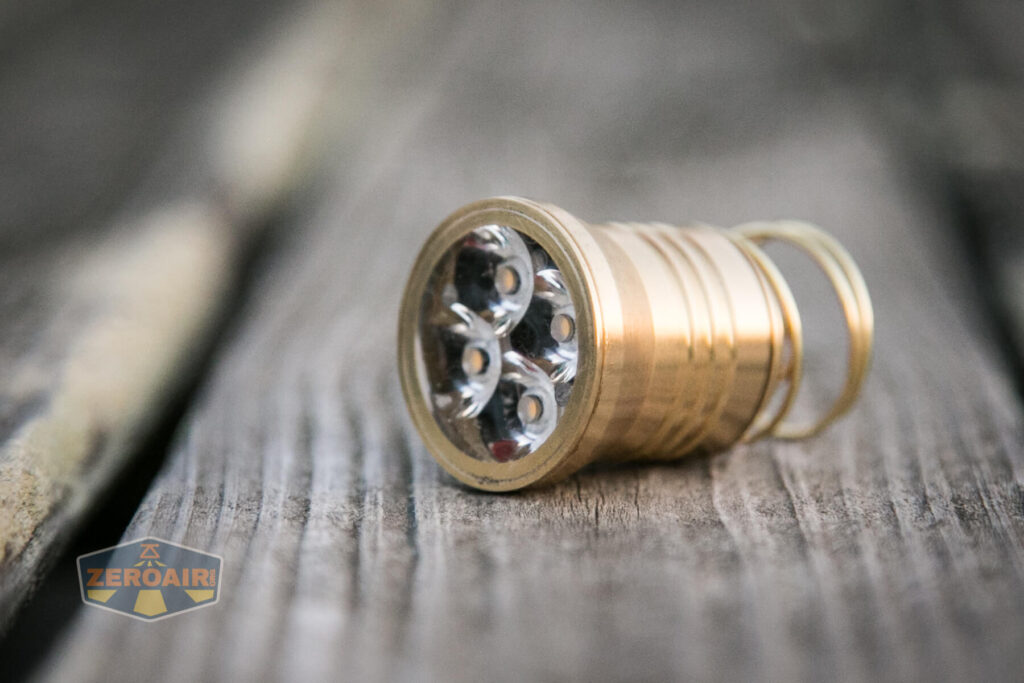
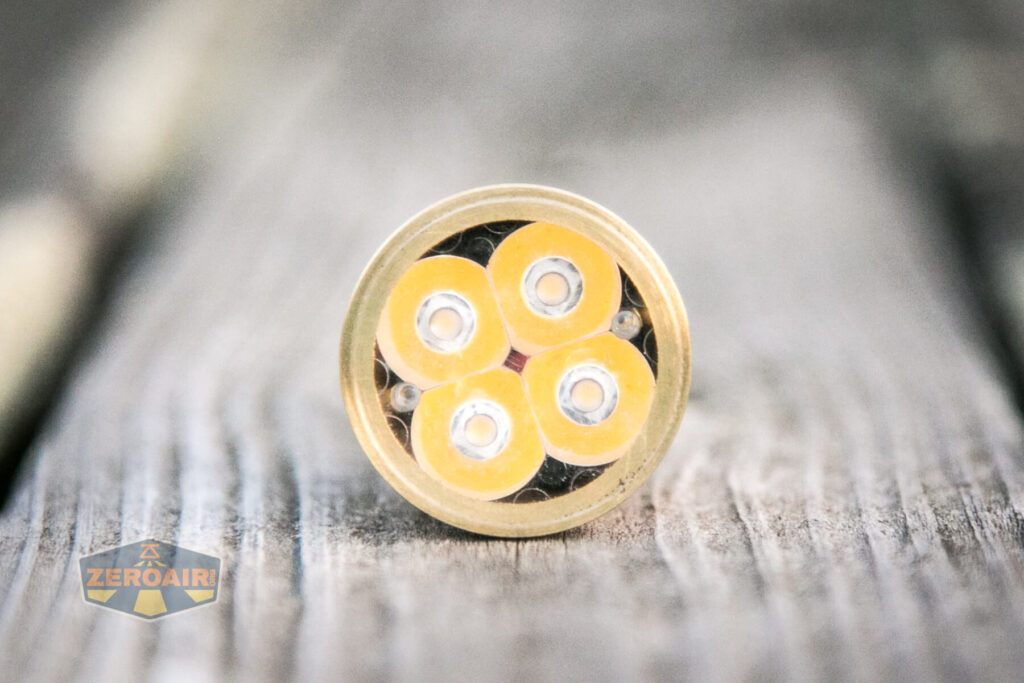
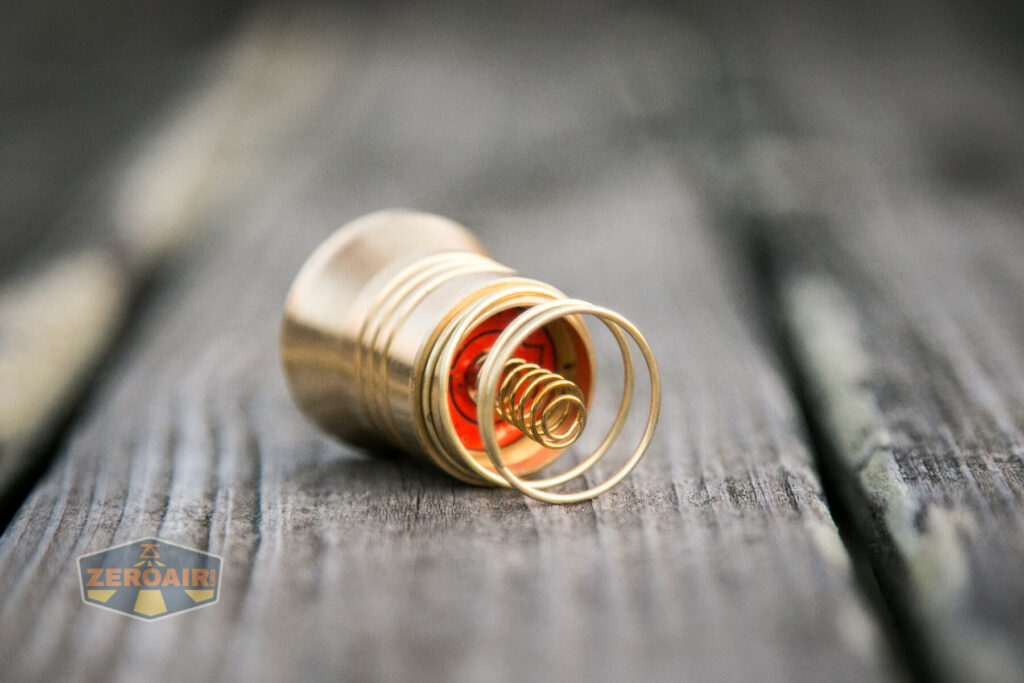
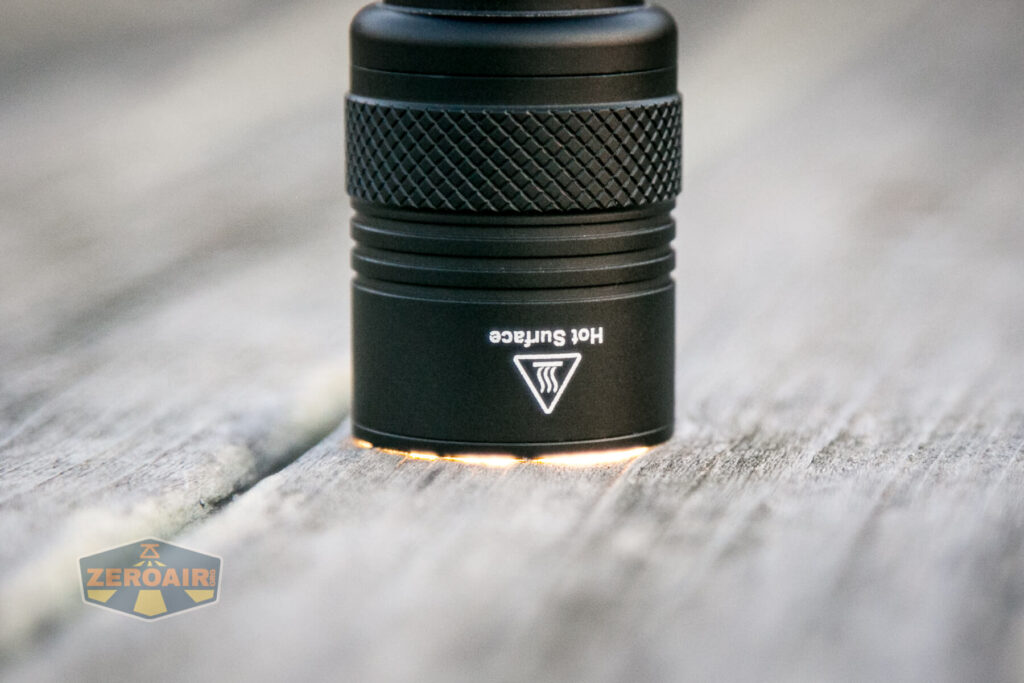
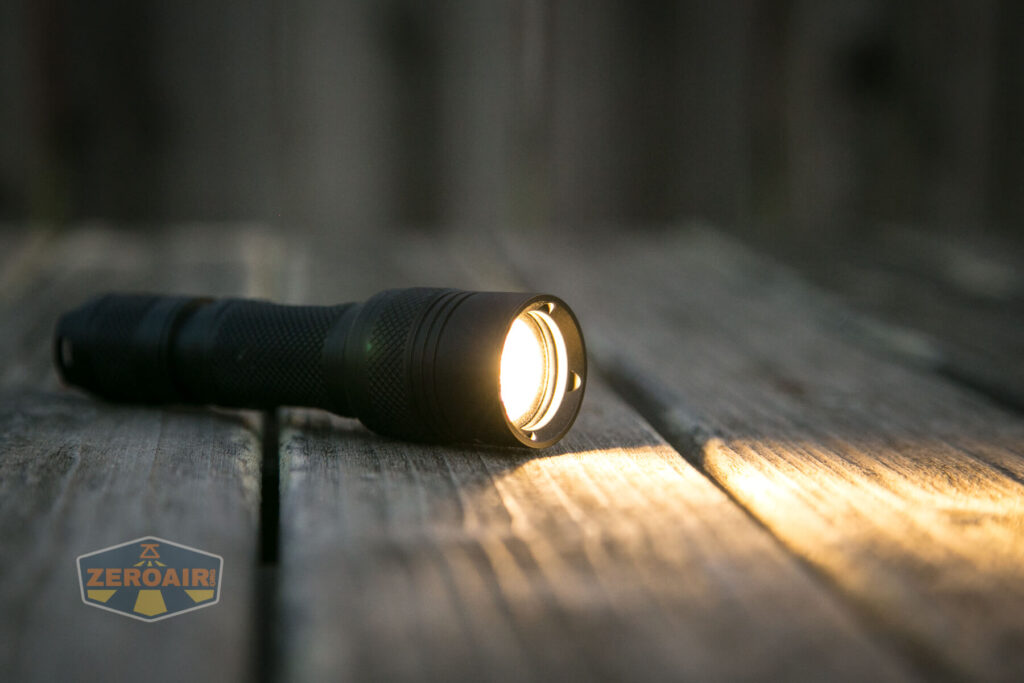
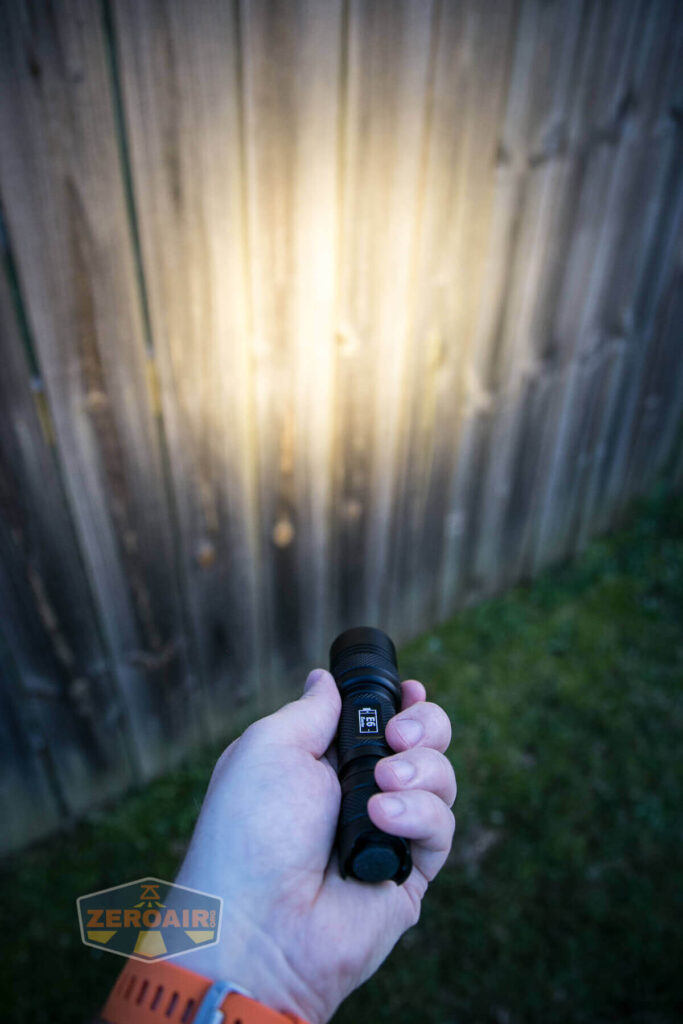
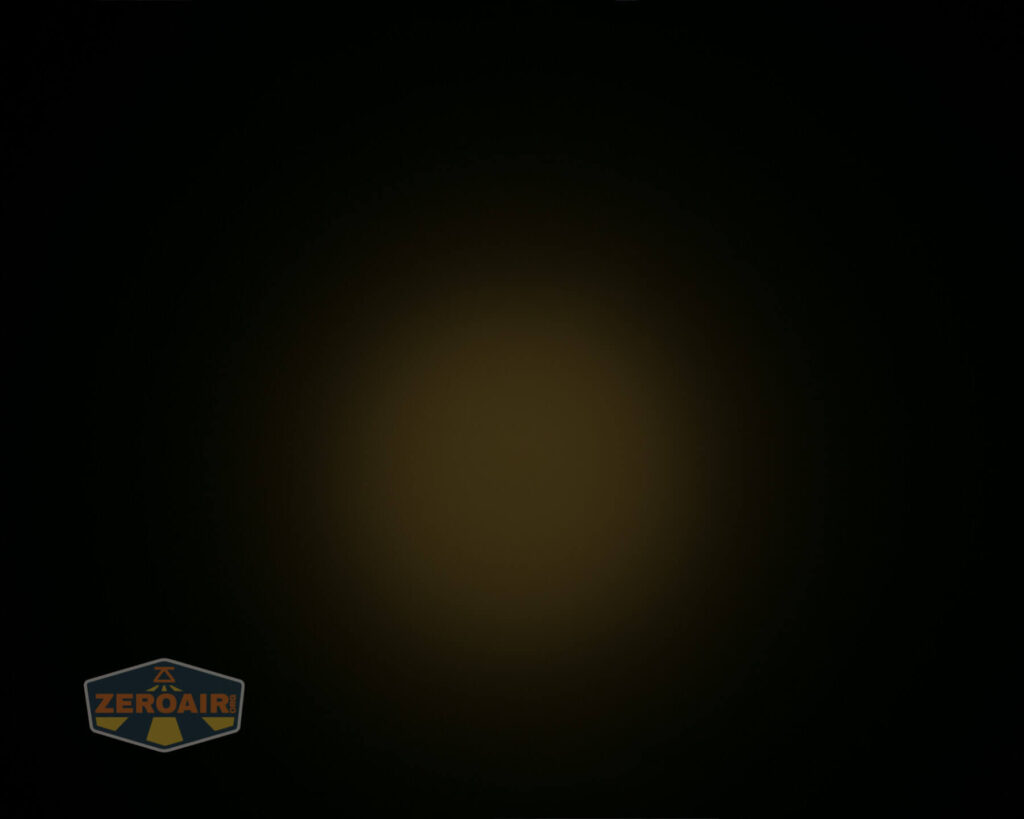
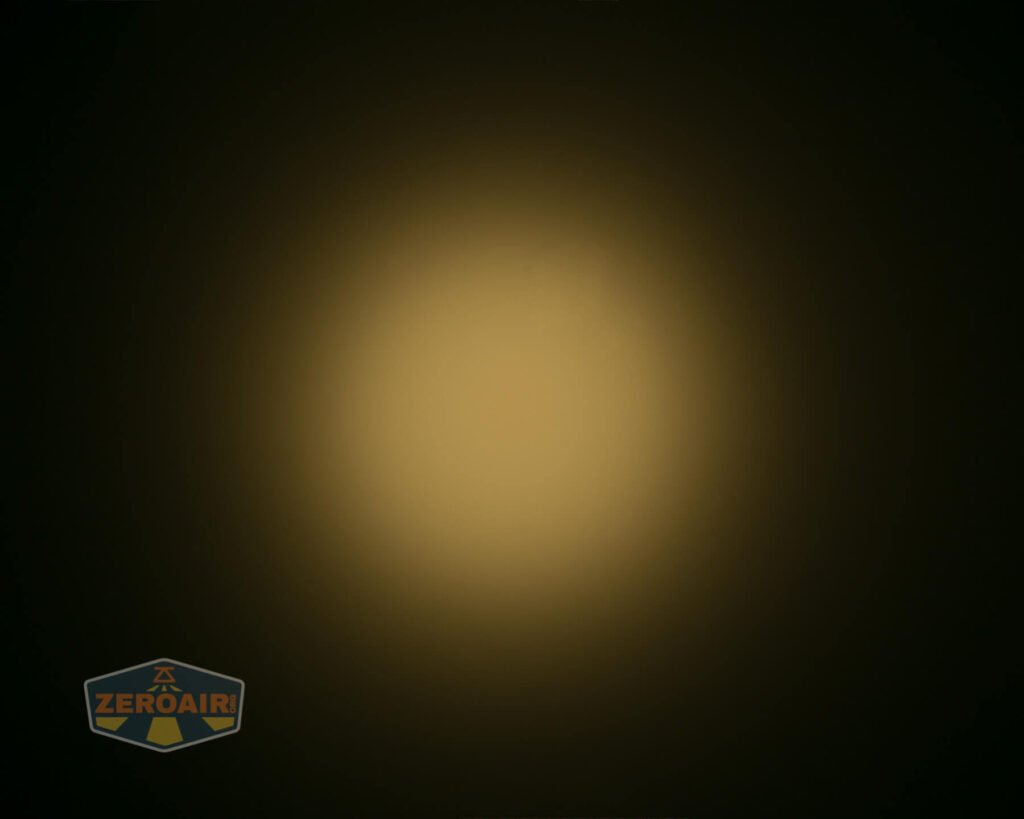
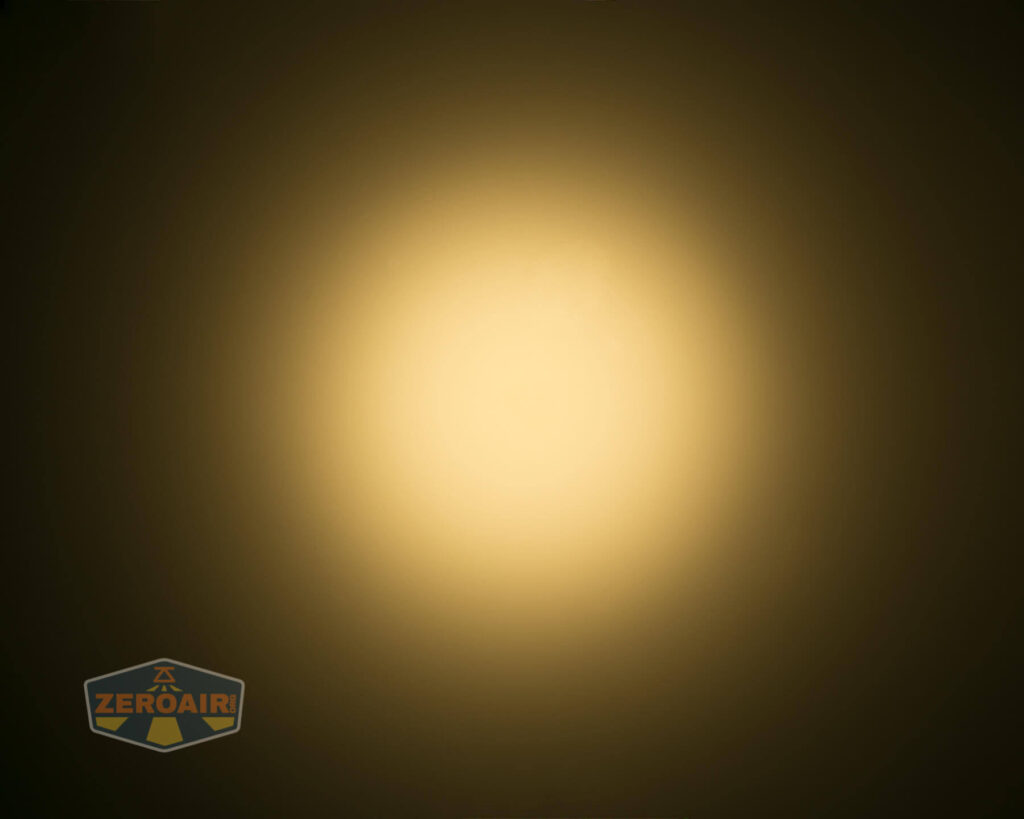
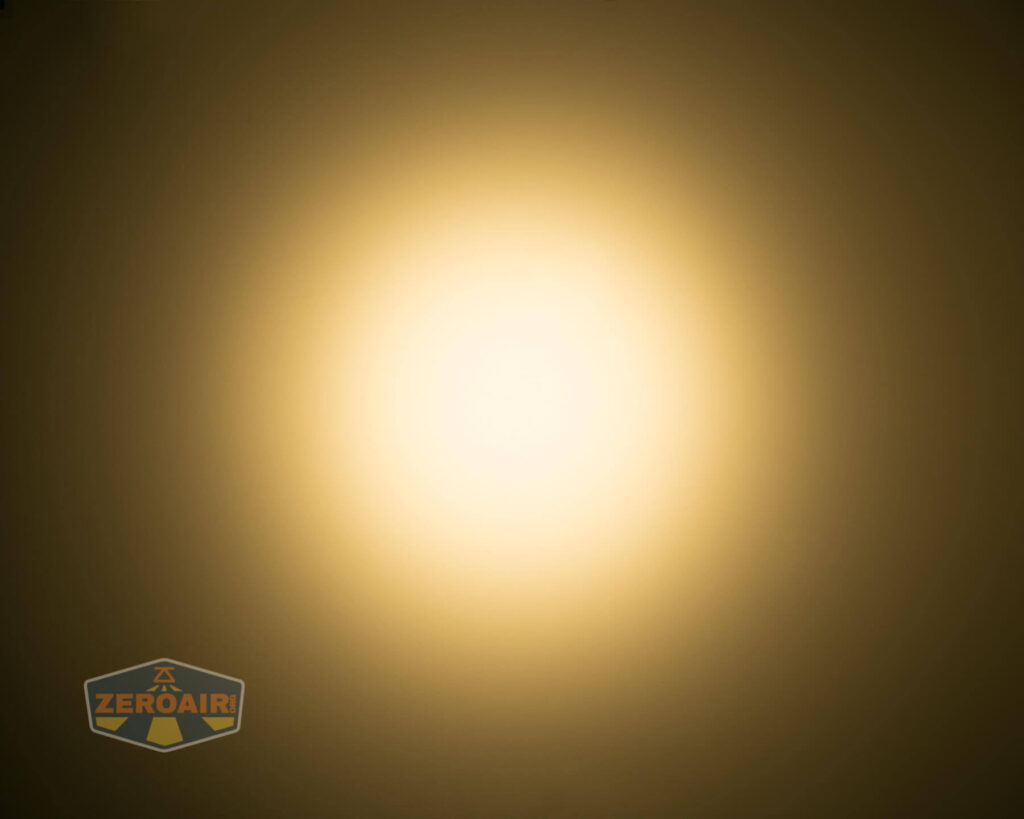
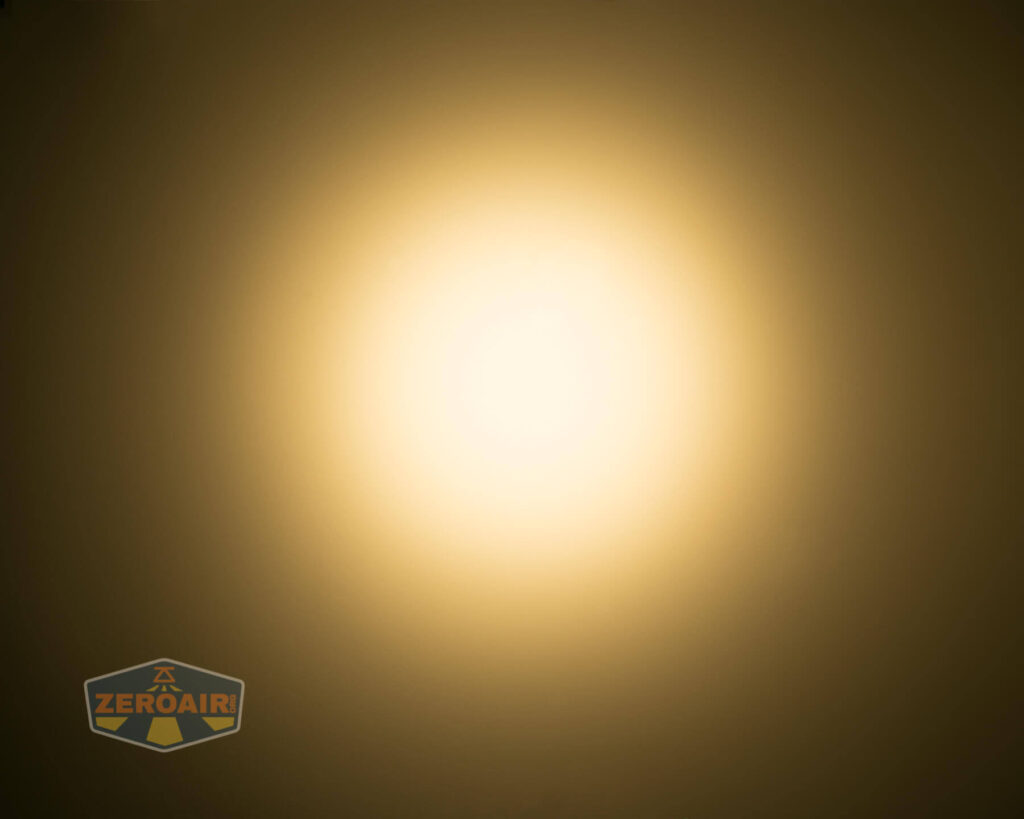
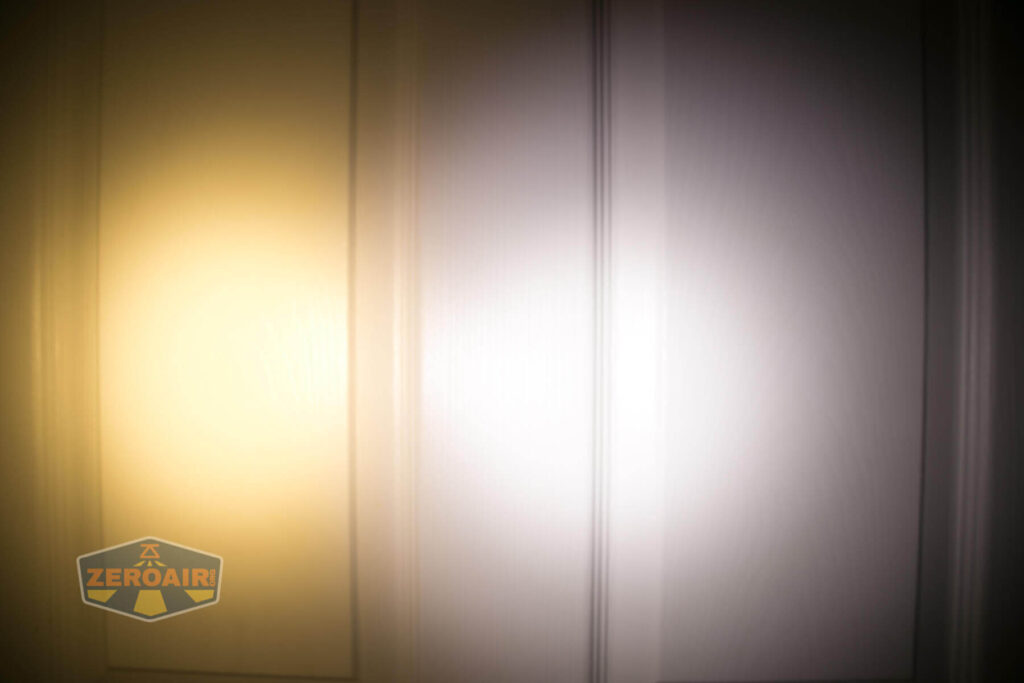
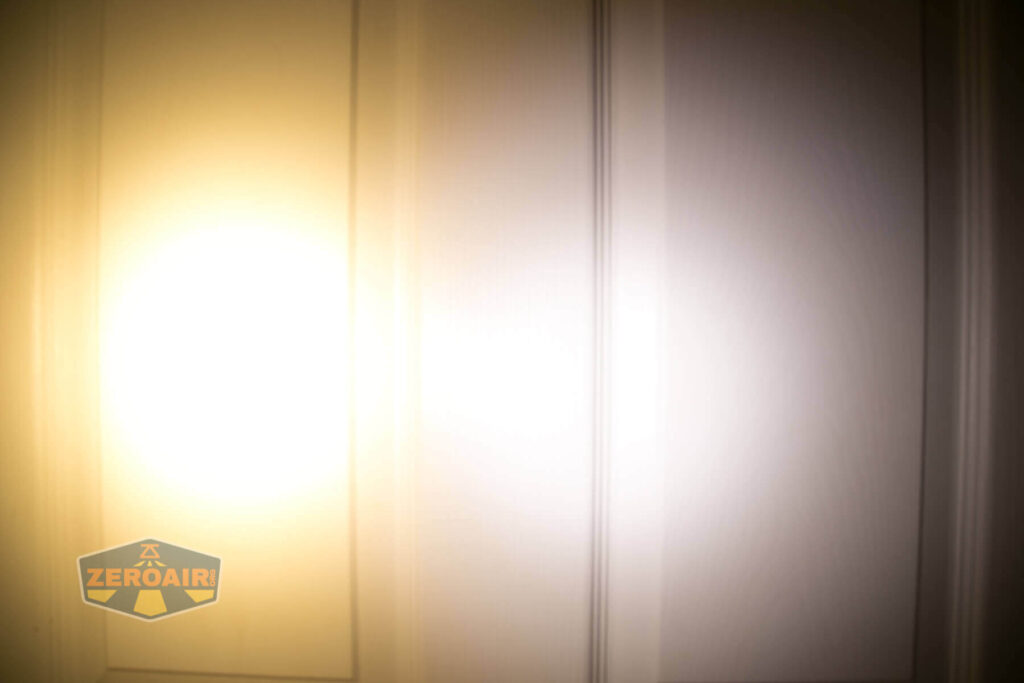
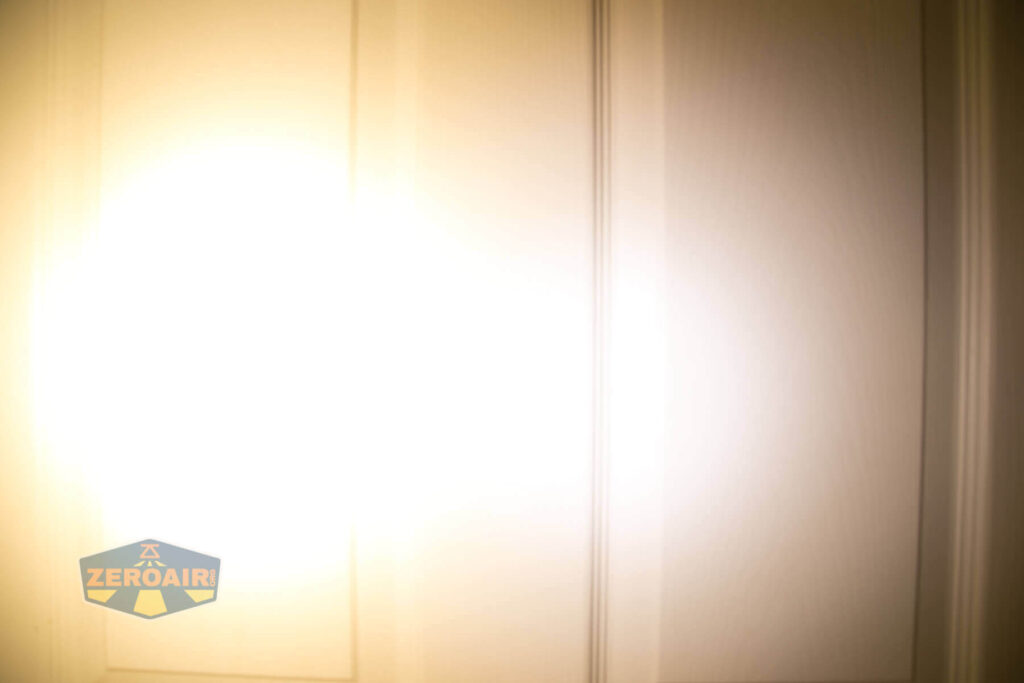
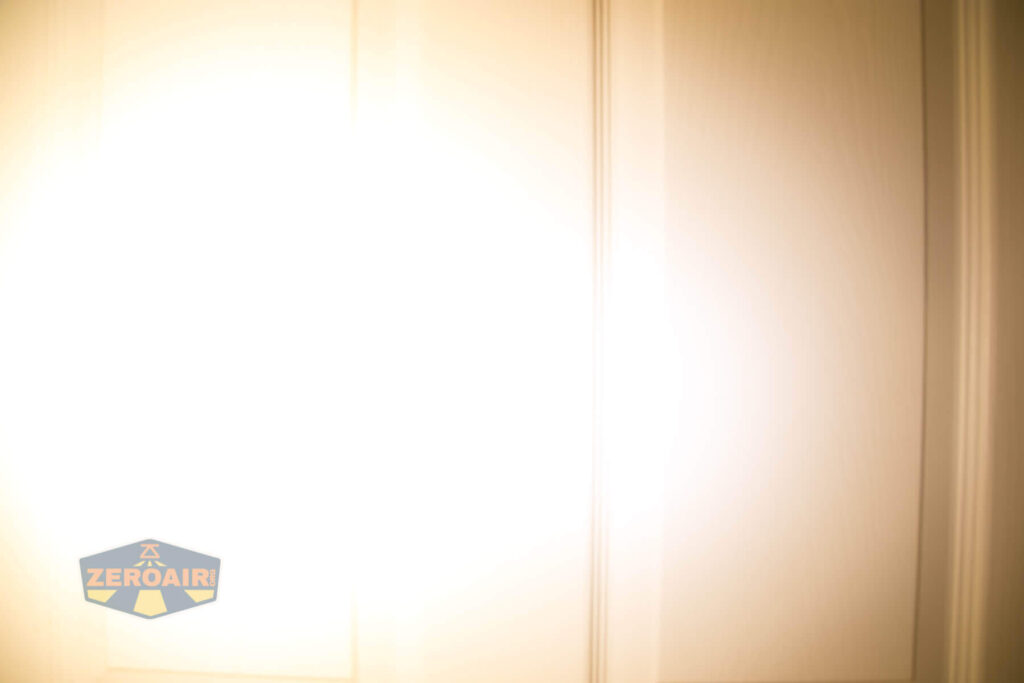
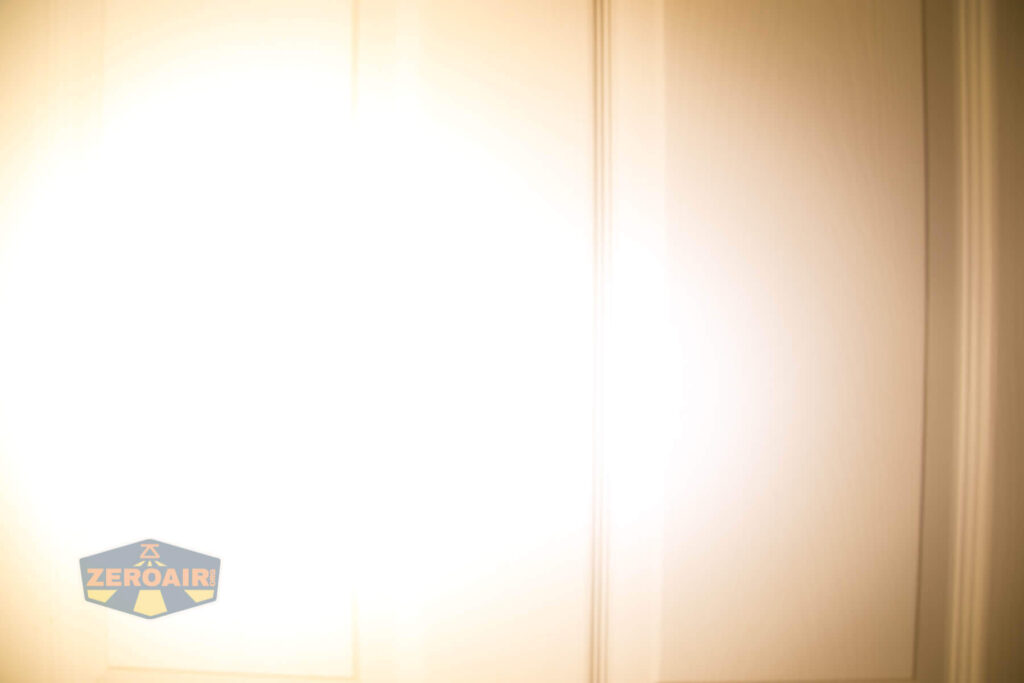

Pingback: Astrolux WP2 LEP Flashlight Review - ZeroAir Reviews